























Let us join you on your journey to stronger, healthier bones, and the active, independent life and lifestyle you deserve. We look forward to hearing from you about your progress and results.

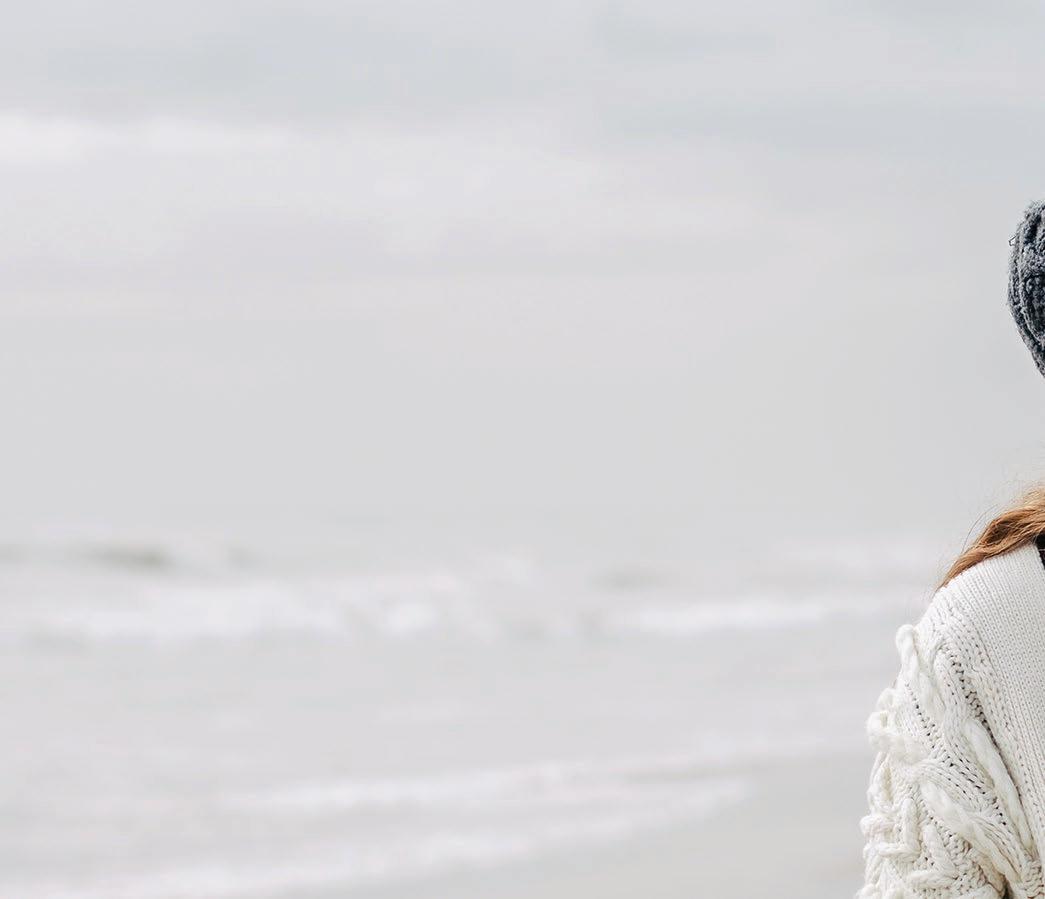


















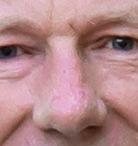





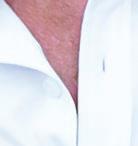
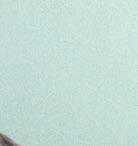










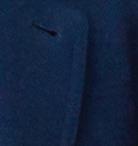
Here’s a controversial fact...Bone loss doesn't have to be an inevitable part of aging. That's right—there are millions of women out there who've successfully stopped bone loss and even increased their bone density, all without any dangerous treatments or side effects.
Now, I know you've probably heard a lot of hokum claims in your time. But let me tell you, this isn't one of them. This information is backed by three separate human clinical trials and verified by countless DEXA bone scans. And each and every one of those scans says the same thing— there's a natural way to beat bone loss.
So don't let anyone tell you that you're destined to lose bone density as you age. Because that’s a load of baloney. Other women have beaten bone loss. You can beat it too. I’m serious! Every last word in this bookazine is supported by some of the world’s leading bone health scientists, doctors, and nutritionists.
Inside, you'll find the latest research on how to keep your bones healthy and strong, including articles on topics like the role of nutrition in bone health, the benefits of weight-bearing exercise, and tips for preventing osteoporosis. We've also included stories of women who’ve increased their bone density and got their strength back.
But we didn't stop there! We've also included fun and interactive content to make learning about bone health a little more enjoyable. So try some of our delicious bone-strengthening recipes, or get moving with some of our bone-friendly workouts.
We all hope to live for as long as possible, but what we really want is to stay healthy and energized as we age, so we can enjoy life to the fullest. The way I look at longevity is that I may be getting older, but I want to make sure that what I’m doing doesn’t slow down. I want to have energy, I want to feel vibrant, and I want to have a positive attitude. And having strong, healthy bones is foundational to all of that.
We hope The Smart Woman’s Guide To Healthy Bones will be a valuable resource for you and help you take control of your bone health.
Dean Neuls | CEO & Co-Founder AlgaeCal Inc.


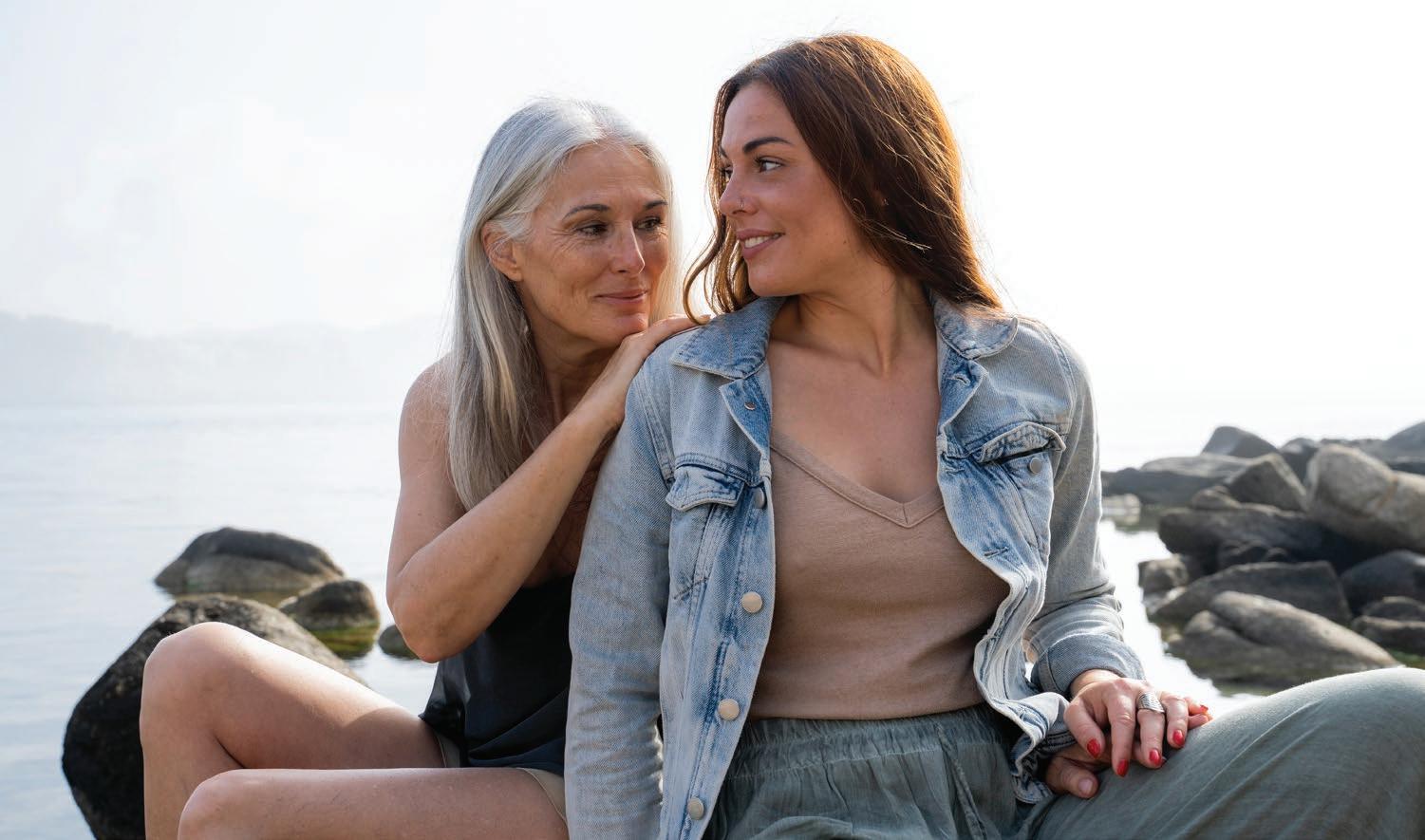


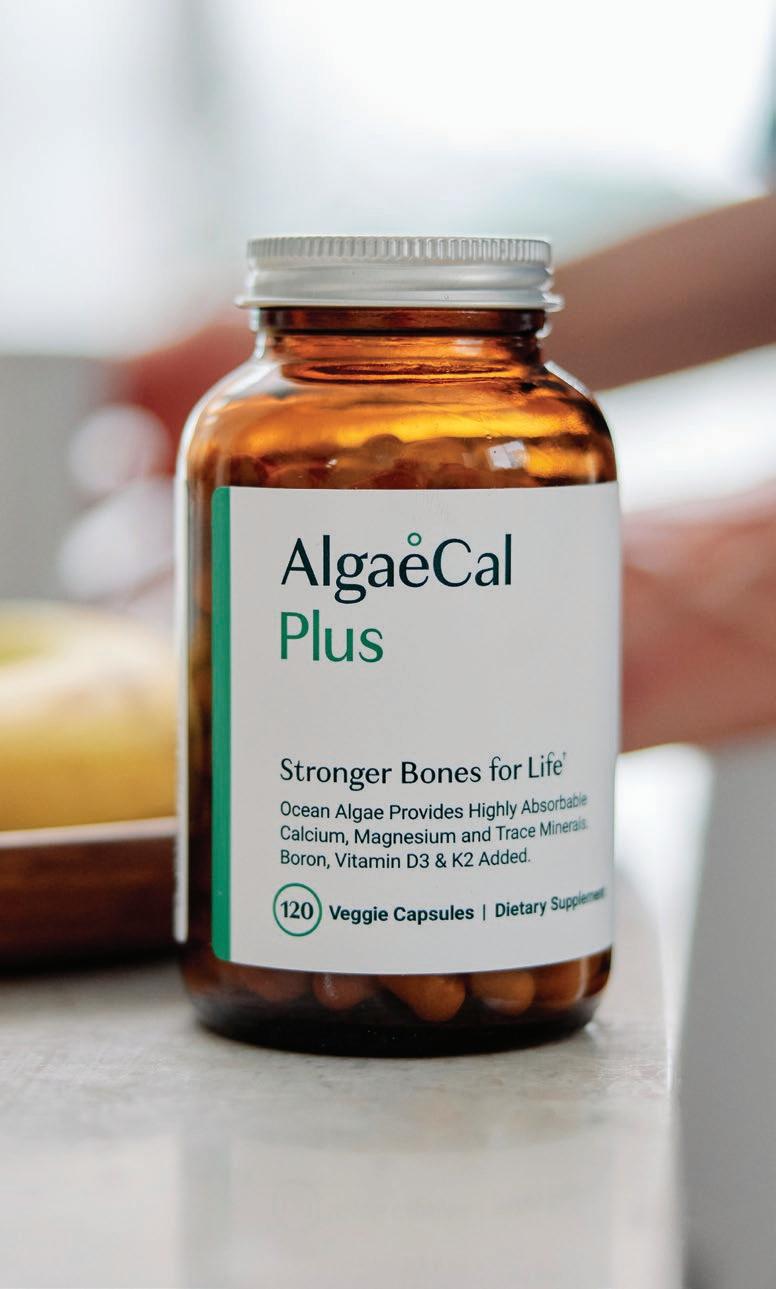


40
It Can’t Save Your Bones, Yet Women Keep Taking It
42 The AlgaeCal Community
43
50
Exercise for Better Bone Health
It’s WORSE Than Osteoporosis, But Most People Don’t Know About It
53 Meet your Bone Health Consultants
58
61
The Final Word On Strontium For Bone Health
Introducing AlgaeCal’s Scientific Advisory Board
Only AlgaeCal’s plant-based calcium is clinically supported to stop bone loss and even increase bone density. That’s why it’s trusted by thousands of women and men to help improve their bone density naturally
Guided by Science, Powered by Nature
We are the global leader in all things natural bone health. It is our only area of focus and concern. Every product and service we provide is designed to help the more than 50 million people experiencing bone-health issues live full, active lives, free from the fear of bone loss or fracture.
Sources
1. https://www.ncbi.nlm.nih.gov/pmc/ articles/PMC3905747/
2. https://www.ncbi.nlm.nih.gov/pmc/ articles/PMC6266857/
3. DOI:10.2174/13852728180 7140515154116
At best, traditional calcium supplements only slow bone loss. Reported clinical gains are merely improvements as compared to no intervention. Real increases in bone—over baseline—had not been achieved naturally. Until AlgaeCal founder Dean Neuls, inspired by his own painful bone issues, found what he was
searching for on a beach in South America. That’s where he was introduced to Lithothamnion superpositum—an ocean algae that contains all 13 of the essential minerals scientifically shown to support healthy bones.
Two decades later, AlgaeCal remains the only calcium supplement clinically supported to stop bone loss and increase bone density— even for people in their 60s, 70s, and 80s. That’s a claim none of the over 450 other supplements can make.
We believe nature offers the best bone-healthy solution to living happy, active, and independent lives. We serve those seeking a plant-based, natural solution. We offer the planet’s leading natural calcium supplement, support, and customer service that no other company does.
Since its founding some two decades ago, the AlgaeCal story features many game-changing firsts.
AlgaeCal is the first and only calcium supplement that’s clinically supported to stop bone loss and increase bone density. This is supported by three clinical studies. No other supplement can make that claim.
Unlike traditional rock-based calciums, AlgaeCal’s novel red algae contains a full spectrum of bone-supporting minerals, including 13 known as essential for healthy bones. And it contains these minerals in very similar levels to those found in human bone. According to research, these trace minerals taken from red algae also work alongside calcium to increase bone density.1
And the wonderful thing about calcium in red algae is that it is incredibly usable by the human body because the algae predigest the calcium and minerals. So your body effectively has a lot less work to do to break down and absorb all the nutrients. This means your bones get the most from these previously non-absorbable minerals.
And because red algae have strong bioaccumulative and bioadsorptive capacities, their mineral content may be 10 to 100 times higher than that of vegetables found on land.2 In fact, red algae are known to have much higher concentrations of bone building calcium, magnesium, and phosphorus than apples, oranges, carrots, or potatoes.3
When taken with AlgaeCal’s Strontium Boost as part of our recommended protocol, AlgaeCal offers the industry’s first and only calcium supplement guaranteed to increase bone density in six months. If not, we refund the entire purchase price.
Our formulas start with a novel, plant-based calcium source that is clinically supported to protect bones and increase bone density when taken per protocol.
This oceanic plant naturally contains all 13 bone-supporting minerals. Our Plus formula also adds in vitamins D3, K2, and C to create a complete calcium formula and one shown to be effective— according to published clinical studies.
Traditional calcium supplements alone don’t make bones stronger.
CONTINUED ON PAGE 8
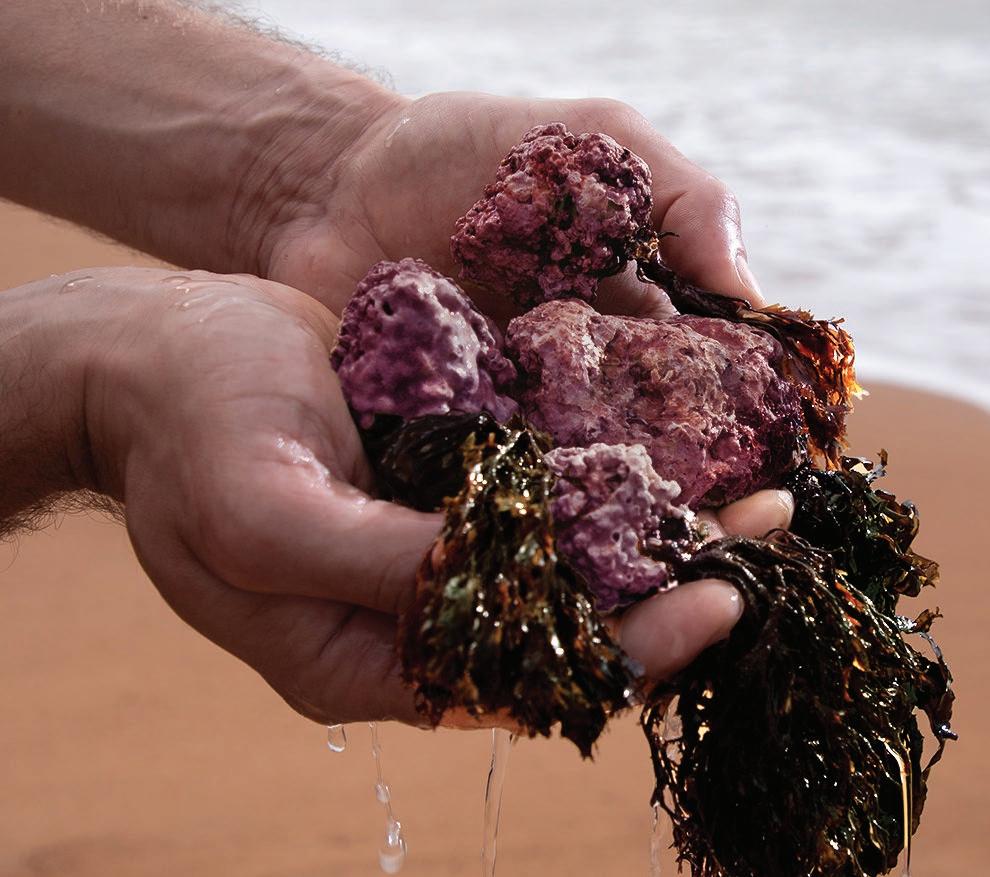
CONTINUED FROM PAGE 7
They can’t. That’s because bone loss isn’t a loss of calcium. It’s a loss of all the minerals in bones. Calcium supplements that contain only calcium are missing 12 vital bone-supporting minerals.
When we’re young, our bones are packed with minerals. That’s what makes them strong. But sometime after our 40th birthday, we start to lose the 13 minerals that keep our bones healthy and strong. And
every year we lose more and more, which makes our bones weaker and weaker.
But there’s good news. AlgaeCal naturally contains all 13 minerals that make bones strong. Besides calcium, this natural superfood has magnesium, potassium boron, copper, manganese, silicon, strontium, nickel, phosphorus, selenium, vanadium, and zinc.
AlgaeCal is a powerful plant-based calcium that naturally contains all 13 bone-supporting minerals.
In human clinical trials, these 13 nutrients have been shown to increase bone density—even for folks in their 60s, 70s, and 80s. That’s why AlgaeCal is backed by some of the world’s leading bone health scientists, doctors, and nutritionists.
AlgaeCal is the only natural option on the market that’s been clinically proven to stop bone loss and increase bone density. So don't settle for anything less—get AlgaeCal and make your bones stronger!

You’re losing minerals from your bones. Those minerals need to be replaced.

Calcium is the most popular supplement in the United States. A whopping 43% of American adults swallow their daily dose of these chalky pills. But do they really protect your bones? Unfortunately, scientific research says ‘no.’
“You really can’t think, ‘I’ll just take enough calcium’ and you’ll be fine,” said Dr. David Slovik, professor of medicine at Harvard Medical School.
The greedy executives at ‘Big Calcium’ don't want you to know this, but here’s the truth about bone loss. It's not a loss of calcium—it's a loss of all the minerals that constitute your bone density. In fact, clinical studies show that it takes 13 minerals and 3 vitamins to strengthen your bones.
So if you're taking just a calcium supplement, you're only getting ONE of the 16 essential nutrients for bone health. So that's 15 missing ingredients you must have if your bones are going to get stronger. And to be clear, you need all these nutrients, not just some of them.
The science is simple: Our bones are dense with minerals when we’re young. That’s what makes them strong. But once we hit forty, our bones start to lose these minerals.
And as time goes on, we slowly lose more and more of these minerals, leaving our bones prone to fractures and breaks.
That’s why half of all American women over 50 can expect to break a bone due to low bone density according to the National Osteoporosis Foundation All because we’re losing the minerals that keep our bones healthy an strong. But AlgaeCal customers know there’s a way to replace these minerals.
After conducting a year-long health study, scientists discovered that lithothamnion superpositum (AlgaeCal), can replenish lost bone minerals. That’s because AlgaeCal naturally contains all the clinically supported minerals that bones need to stay healthy and strong.
Teams of scientists, researchers, and professors from Harvard Medical School, Georgetown University Medical Center, and the University of Connecticut have studied AlgaeCal. And all the studies came to the same conclusion: AlgaeCal is the only natural supplement shown in human studies to increase bone mineral density.
Think about that for a moment. As people age, they often accept deteriorating bone health as just
“part of getting old,”—but why should they limit themselves like that?
In fact, science shows people can become stronger than they were 1, 2, or even 20 years ago! That's right—your bone health doesn't have to decline as you age—it can actually improve!
And that’s why AlgaeCal is the only calcium supplement on the planet that offers a rock-solid guarantee. So, here’s the deal, when you take our Bone Builder Pack as directed for at least 6 months, you’re going to see measurable increases in your bone mineral density. And in the highly unlikely event that you don’t, you’ll get a swift and courteous refund.
So you either get stronger bones in 6 months, or you get your money back. You can’t say fairer than that, can you? So call one of our Bone Health Consultants today, toll-free at 1–877–644–9916 (USA/Canada) to see if the Bone Builder Pack is right for you.
As far as Lucie was concerned, taking the medication her doctor was prescribing for her bone health would be like “playing russian roulette with my body.” She chose to take AlgaeCal instead—and the results shocked both her and her doctor.
Lucie Pagé has always been active in every aspect of her health. As a journalist specializing in health and science for over 40 years, like so many women before her, Lucie thought she was doing everything right. Especially when it came to her bone health.
“I just turned 60,” Lucie said.” I've been active all my life. I do long distance swimming, I do pilates. I don't take medication. I'm mostly vegetarian.” She also meditates, does yoga, and weight-bearing exercises.
Because her last bone scan in 2013 didn’t contain anything she needed to be concerned about, she said “sure” when her doctor recommended she get another scan in July of 2020.
“I didn't have any worries,” she said. But then...“Oh! I got the shock of my life.”
Her latest results showed a T-score of -3.3 in her lower spine. That was a loss of almost 21%. And that wasn’t all. She had also lost 19.6% in her left hip and 13.5% in her right hip.
She thought she’d been doing everything right, so being diagnosed with osteoporosis was like “an atomic bomb” lit up in her head. “It was a slap in the face for me,” she said.
Then, in November 2020, just four months after her diagnosis, Lucie wound up in the hospital for two weeks after breaking four ribs. The former gymnast and dancer was

now describing her bones as “swiss cheese.” She even broke a rib bumping into a wall while carrying a box.
She now had osteoporosis and thought her life was over. And what a life it was.
As a young journalist, she had been sent to South Africa during the fall of Apartheid.

During her first meeting with Nelson Mandela she opened the conversation by telling him he’d been in prison her entire life. She was 27.
But going to South Africa would have an even bigger impact on her personal life than it did her professional one. That’s because it was there where she also met her future husband. Today she splits her time between Québec and South Africa, is the author of eight books, and the grandmother of three boys.
And it was her life with her grandsons that caused her the most concern. That’s because one of the things she enjoyed most was being able to be active and play with her grandchildren.
But now she couldn’t keep up with them and was having to choose between being less active or “taking this drug that could kill me.”
The drug she’s talking about was the prescription drug her doctor prescribed after her diagnosis. Remember, Lucie doesn’t like taking prescription drugs, so she asked if there were any side effects. Her doctor told her there were just a few, but “nothing to worry about.”
That’s when the journalist in Lucie began investigating and found side effects she could only describe as “horrendous.” Between potential side effects that include jawbone fracture and loose or lost teeth, as well as femur fractures that could occur spontaneously during low impact activity, it only took one day of research for Lucie to decide she was never going to take that medication, and her reason couldn’t have been clearer.
“It's like playing Russian roulette with my body,” she said.
When she began looking for a natural alternative to prescription medications she found AlgaeCal kept popping up in her Google search.
“It had a beautiful website, wonderful testimonials, almost too good to be true. So I talked to my endocrinologist about it. He said, ‘Send me some info.’”
So she wrote to AlgaeCal and they sent her everything she needed. Her doctor was skeptical but said she could try it if she wanted to.
So Lucie got the Bone Builder Pack and took it “religiously” for two years with her husband asking the whole time, “you sure this is going to work?”
Then, two years later she had another bone scan, and if you think she was surprised by the results, imagine her doctor’s reaction. Lucie said her doctor’s jaw was on the floor and had to take a few minutes to absorb the latest scores.
Lucie had a 10.9% increase in her lower spine, a 7.8% increase in her left hip, and a 7.7% in her right hip. Her doctor had never seen improvements like this before.
Today Lucie feels healthier, enjoys playing with her grandsons, and hopes even the most proactive of women will get a DEXA scan sooner than later so they’ll know for certain what is actually going on with their bone health.
As for Lucie? “I will continue taking [AlgaeCal], I will continue doing my weight-bearing exercises, I will continue eating nutritiously and I will continue being part of your family. Thank you for helping the women of the world and thank you for being there.”

To hear Lucie tell her full story, visit algaecal.info/luciepage-swg or scan the QR code below.

If you’re concerned with your bone health, you’re undoubtedly taking calcium. That’s great, but while calcium steals the spotlight, research shows there are at least 16 other nutrients that are important to the bone-building process. Each is critical for good health. But when you take them together, amazing things can happen for your bones!
 Reviewed by
By Lara Pizzorno, MDIV, MA, LMT
Reviewed by
By Lara Pizzorno, MDIV, MA, LMT
Sources
1. https://pubmed.ncbi.nlm.nih. gov/26770156/
2. https://www.ncbi.nlm.nih.gov/pmc/ articles/PMC4712861/
3. https://pubmed.ncbi.nlm.nih. gov/30563174/
4. https://ods.od.nih.gov/factsheets/ Copper-HealthProfessional/
5. https://pubmed.ncbi.nlm.nih. gov/28093633/
6. https://www.ncbi.nlm.nih.gov/pmc/ articles/PMC3571640/
7. https://pubmed.ncbi.nlm.nih. gov/32305626/
8. https://pubmed.ncbi.nlm.nih. gov/16256449/
9. https://pubmed.ncbi.nlm.nih. gov/22552031/
10. https://pubmed.ncbi.nlm.nih. gov/19347239/
So, here’s a list of the top 12 minerals in addition to calcium and 3 vitamins you absolutely must have for stronger bones. Plus, the best food sources of each. (At the end, you’ll see how to get all these nutrients in the right amounts to show improvements on your DEXA scans!)
Boron: Boron is a trace mineral essential for the growth and maintenance of healthy bone. Boron helps our bones get the most benefit from vitamin D and our hormones. Boron becomes especially important for postmenopausal women and for men as testosterone levels start to decline after age 50. Boron also boosts magnesium absorption, reduces oxidative stress and helps protect against cancer. 1 Best food sources:
• Avocados
• Prunes
• Red Kidney Beans
• Lentils 2
Calcium: Yes, the list isn’t complete without mentioning calcium. After
all, 99% of all the calcium in your body resides in your bones and teeth. Calcium helps provide the structure of your bones and the strength that prevents fracture. 3 Best food sources:
• Dairy Products
• Mineral Waters
• Dark-Green Leafy Vegetables
• Dried Peas and Beans
• Fish with Bones
Copper: Copper is essential in bone metabolism, activating enzymes like lysyl oxidase that incorporate both collagen and elastin into the organic component of bone. 4 Best food sources:
• Shellfish
• Nuts and Seeds
• Organ Meats
• Whole Grains
• Chocolate
Magnesium: Did you know that as many as 80% of Americans are magnesium deficient? Without magnesium we cannot produce osteoblasts, the cells that create new bone for us, nor can we activate the enzyme that converts
vitamin D into 1,25-D, the form in which vitamin D helps us absorb calcium. Lack of magnesium means fewer osteoblasts and less calcium —a perfect recipe for fragile bones. Best food sources:
• Pumpkin Seeds
• Halibut
• Quinoa
• Spinach
• Cashews, Almonds
• Dark Chocolate
Manganese: Manganese is critical in the formation of the extracellular matrix–the ground substance to which collagen adheres, and for the development of chondrocytes, the cells that secrete cartilage and become bone building osteoblasts and eventually osteocytes, which regulate the entire bone renewal process. 5 Without manganese, bone mineralization simply cannot start! Best food sources:
• Oats
• Brown Rice
• Spinach
• Pineapple
• Tempeh and Tofu
Nickel: Nickel can affect the distribution of other nutrients in your body, including calcium. Given the obvious benefit calcium has on our bones, you can see why an adequate level of nickel is critical to maintaining healthy bone! Best food sources:
• Nuts
• Legumes
• Grains
• Chocolate
Phosphorous: Approximately 85% of the body’s phosphorus is found in your bones. It’s fundamental to growth, maintenance, and is necessary along with calcium and magnesium for proper growth
and formation of bones. Best food sources:
• Salmon
• Lean Beef
• Brazil Nuts
• Lentils
Potassium: By helping to neutralize the acidic pH resulting from the Standard American Diet, potassium prevents the loss of calcium from bone to restore a more alkaline pH, thus conserving calcium within our bones body and reducing its loss in urine.5 Best food sources
• Baked Potatoes (with skin)
• Prunes, Raisins
• Banana
• Acorn Squash
• Tomato Juice
• Artichokes
Selenium: Selenium is the required cofactor for two groups of enzymes
intimately tied to bone health: the selenoenzymes, which neutralize bone-destructive free radicals and the deiodinase enzymes, which are necessary for the healthy thyroid function that keeps our bone renewal metabolism running. For these reasons, low selenium can mean decreased bone mineral density.6 Best food sources:
• Brazil Nuts (but don’t have more than 2 each day),
• Tuna, Halibut, Sardines
• Ham, Beef, Turkey
• Shrimp
Silicon: Silicon plays a key role in bone formation by stimulating the production of bone-building osteoblasts and the synthesis of type 1 collagen, and by increasing calcium’s incorporation into bone.
CONTINUED ON PAGE 14

CONTINUED FROM PAGE 13
Best food sources:
• Mineral Waters
• Beer
• Whole Grains
Strontium: Scientists have discovered strontium has a unique dual-action on your bones.
Strontium inhibits bone resorption while simultaneously stimulating bone growth through more than a dozen mechanisms of action, a true win-win for bone! Best food sources:
• Filter Feeding Shellfish (like Oysters and Scallops)
• Bran in Whole Grains
• Peels of Root Vegetables
Vanadium: Vanadium helps boost our metabolism of carbohydrates, acts as an antioxidant with anti-viral, anti-cancer, anti-diabetic, anti-high cholesterol and anti-obesity effects, and can be incorporated into and strengthen bone, replacing phosphate ions.7 In one animal study, vanadium compounds were shown to increase bone formation without any adverse health effects! 8 Best food sources:
• Mushrooms
• Spinach
• Black Pepper
• Wine
Zinc: Zinc influences the osteoblasts in our bodies, the cells that actually build up our bone. If you are deficient in zinc, it will delay your bone growth, development and maintenance of bone health. Best food sources:
• Shellfish
• Mushrooms
• Black Pepper
• Parsley and Dill
Vitamin K2: Vitamin K2 activates osteocalcin, the protein that delivers calcium to our bones. At the same time, it also activates matrix Gla protein, which prevents calcium from depositing in soft tissues, like our arteries, heart or kidneys. The most potent food source of vitamin K2 is natto, which is a fermented soybean popular in Japanese cuisine. Since few Westerners eat natto and the amounts of K2 present in other fermented foods like cheese are too low to support adequate K2 levels, taking a vitamin K2 supplement (in the form of MK-7) is the best way to go.
Vitamin D3: Vitamin D is essential for your body’s absorption and use of calcium. That’s why a vitamin D deficiency can contribute to osteoporosis. As it’s not always practical to get your vitamin D from sunshine—and even more difficult to get it from your diet—many people turn to a vitamin D supplement to ensure adequate levels. It’s best to take your vitamin D in combination with calcium, magnesium and vitamin K2 to maintain a proper balance, as they work closely together.
Opt for vitamin D3, as this is the far more effective version of the vitamin and the form we produce in our skin from exposure to sunlight (vitamin D2, which is produced by fungi and yeast, is far less potent) 9
Vitamin C: Vitamin C is not only a powerful antioxidant that helps protect your body from bonedestructive free radicals, it’s also essential for collagen formation and boosts osteoblast production and activity. Numerous studies show higher bone density in those
who consume higher than RDA levels of vitamin C. Plus, the Framingham Osteoporosis Study, a 17-year study found those consuming the most vitamin C reduced their risk of hip fracture by 69%! 10
To get all of these bone-building nutrients, you’d typically have two options. The first would be to create a meal plan that contained enough of each nutrient to make a difference in your bones. This would require far more effort, far more food—and greater expense— than most people would want.
The second option would be to buy a boatload of nutritional supplements to make up the difference.
Fortunately, we now have a far easier, cost-effective way. And that’s AlgaeCal Plus!
AlgaeCal Plus is a nutritional supplement that contains all these nutrients from a natural, plantbased source. The “secret”? A red algae from South America whose use in AlgaeCal Plus has been shown in 3 studies of postmenopausal women to actually increase bone density! To try AlgaeCal Plus for yourself, click this link.
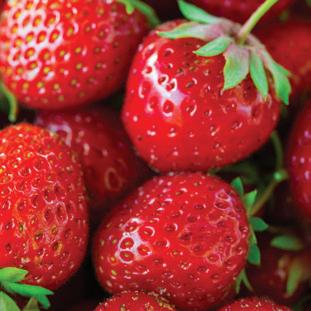

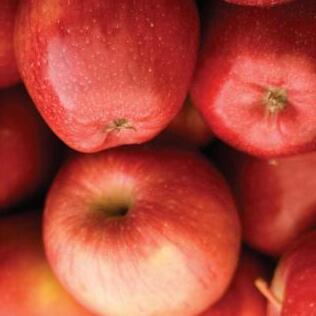






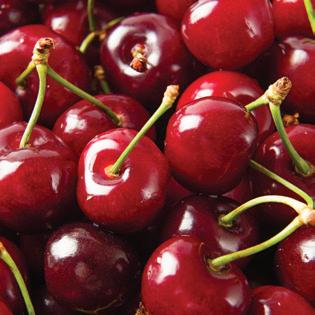


* Strawberries and Spinach were the worst offenders for a sixth straight year.
A single sample of kale, collard & mustard greens had up to 21 different pesticides.



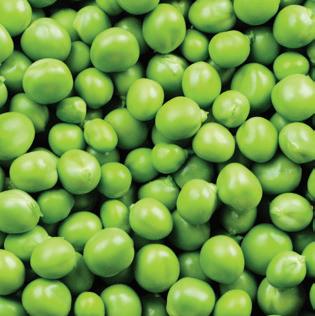





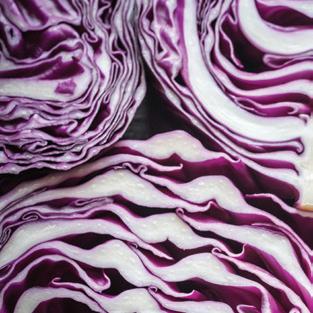





*A small amount of sweet corn, papaya and summer squash sold in the United States is produced from genetically modified seeds. Buy organic varieties of these crops if you want to avoid genetically modified produce
Less than 2% of avocados and sweet corn samples showed any detectable pesticides.
Almost 70% of Clean Fifteen samples had no pesticide residues.
Jeanette, a Community member since 2018 wanted to know, how often should I have a DEXA scan to monitor my improvement on AlgaeCal? Brilliant question Jeanette! “The recommendation is every two years for postmenopausal women, but there is no harm in yearly scans if you want to track your progress more closely.”
Bonnie, the newest member of our community, had a great question about her first AlgaeCal order. Do we take AlgaeCal separate from only Strontium or separate from other supplements as well ? A lot of folks have been asking us this question. And yes, you should separate your AlgaeCal from your Strontium. And if you’re also taking a stand-alone iron supplement or anything with high calcium content, you will also want to separate that from your AlgaeCal.
Is running good for the bones?
Su Castro, a valued member of the AlgaeCal Community, wishes to know. We asked Dr. Emma to answer this one. “Yes, running is great for the bones, as it’s a weightbearing activity. It’s advised to also perform cross-training strength and resistance exercises because running occurs mostly in the sagittal plane (forward), and training muscles that help you move sideways and diagonally are important as well. Remember to pace your
running and gradually increase exposure so you don’t overload your system. As long as you do that, running is a wonderful exercise. If you have a Dexa score of -3.0 then it may be in the questionable category, but if you have been performing the activity for a while, then it is great to continue to do so!”
CONTINUED ON PAGE 18
Got questions about your bone health? Get them answered in The AlgaeCal Community. Or send them directly to support@algaecal.com. We’re here to help guide your bone health journey.

CONTINUED FROM PAGE 17
Susan Cryan, a Community member since 2020 wanted to know, is it okay to take AlgaeCal with a snack like applesauce or an orange instead of with a meal? Brilliant question, Susan! “Yes, that’s okay. Anything to get the digestive juices flowing will help with the absorption of AlgaeCal,” says Megan Wong, RD, and AlgaeCal Community expert.
How can I add more bonebuilding moves to my daily routine?
If you’re looking to fire-up your day with more bone-building, calorieburning goodness without adding a lot of time to your exercise routine,
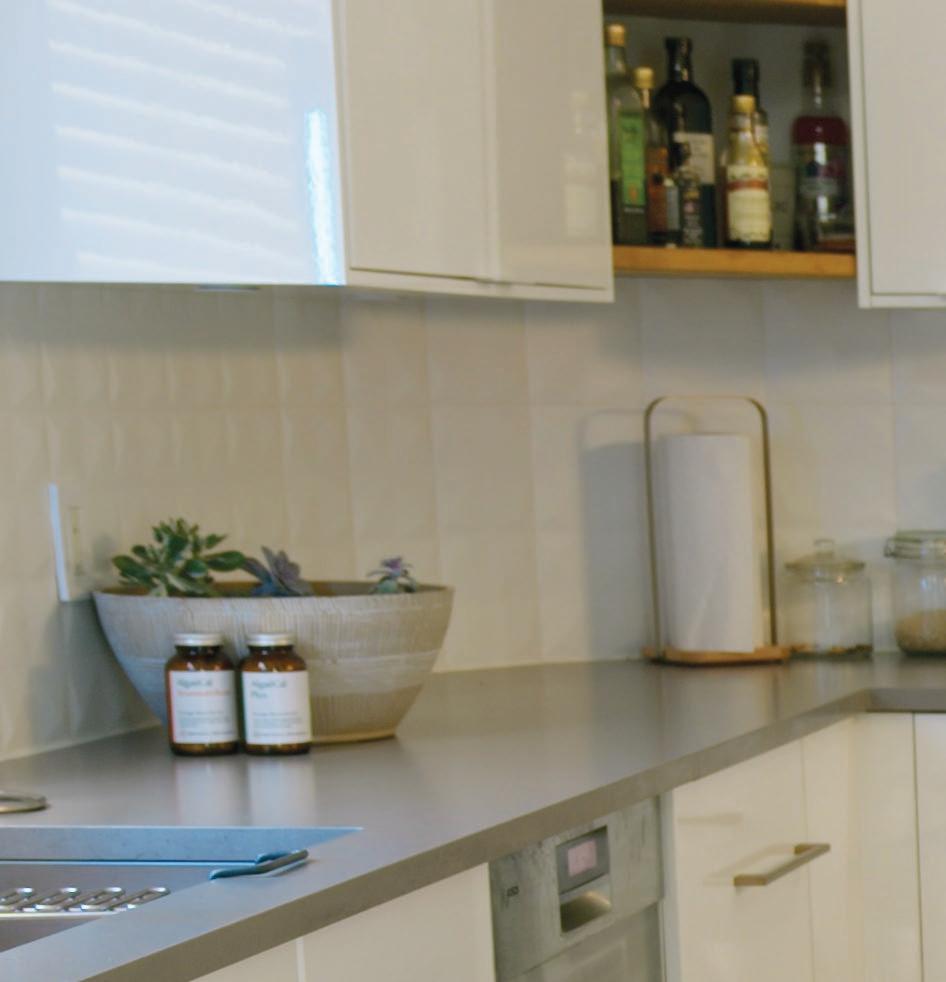

you’re in luck. Dr. Emma Gasinski, a certified yoga teacher and inhouse physical therapist for the AlgaeCal Community, shares her three simple, yet powerful boneprotecting micro workouts you can do every day to improve your bone health.
To level up your morning routine, add some small movements while you wait for your morning cup of joe to brew. See how many counter push-ups you can do. Follow those with a few functional yoga or tai chi stretches.
Once your body’s warmed up, keep that momentum going by looking for opportunities to take the longest route possible to your

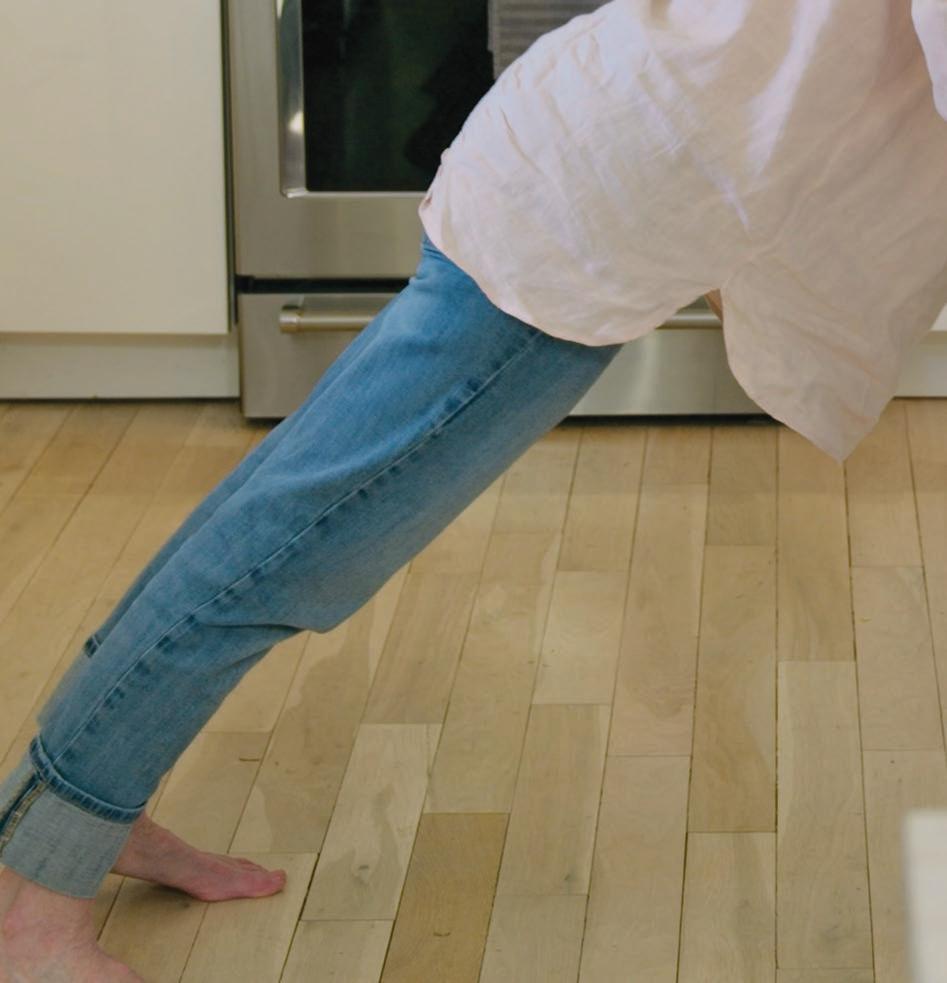
destination. Take the stairs instead of the elevator. Park in the lane farthest away from the entrance. These extra 100–200 steps add up throughout the day and can make a noticeable impact on how much bone-building activity you get.
Most people sit far more than they stand or walk each day. That’s why Dr. Gasinski’s favorite boneprotecting exercise, the squat, is perfect for your daily routine. This do-anywhere move activates the core and leg muscles, and encourages blood flow to the legs after sitting for a while. It also improves strength and balance.

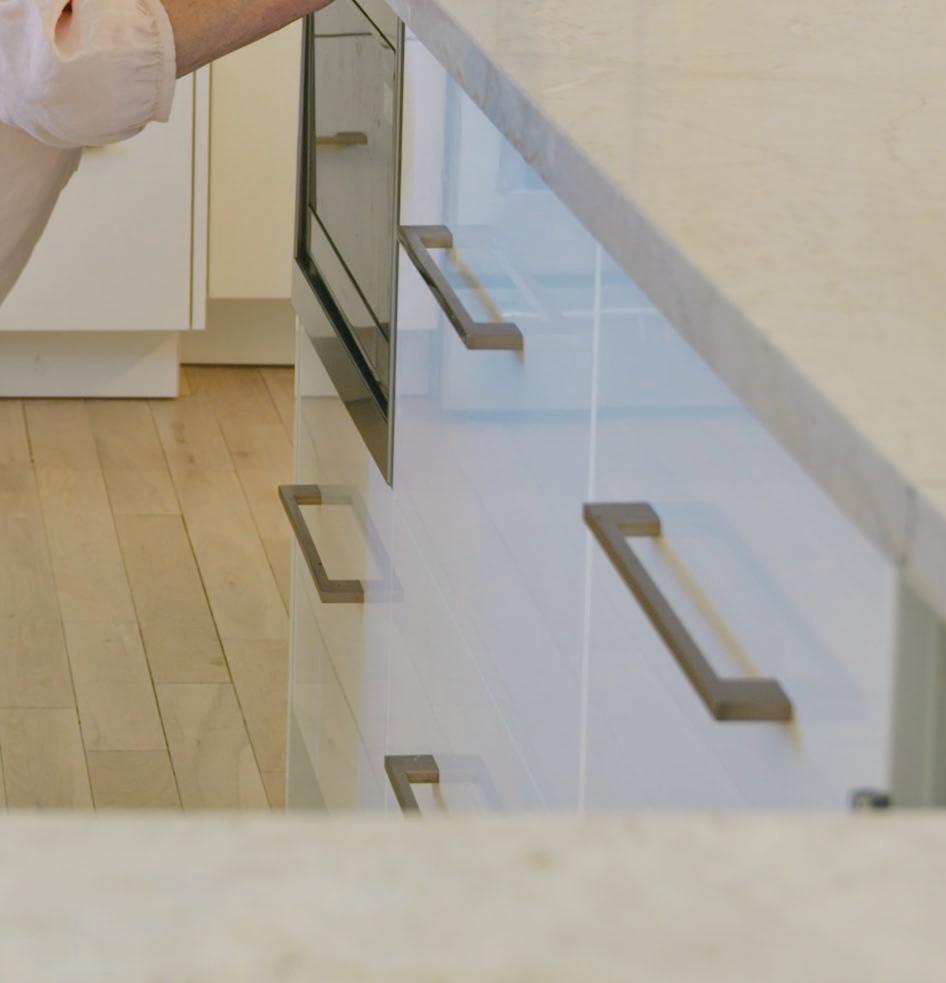
Bone-health expert Lara Pizzoro’s Healthy Bones, Healthy You! is the most comprehensive book on bone health ever written. The best-selling author of Your Bones has packed her latest book with information, tips, and tricks to help you strengthen and protect your bones, and live the bone-healthy life and lifestyle you’ve always dreamed of.
Get your copy of Lara’s GROUNDBREAKING book at amazon.com today.

“Lara’s first book taught me more about osteoporosis than I learned in medical school. Healthy Bones, Healthy You! goes considerably beyond that, digging deeper into the latest science and delivering simple, effective strategies anyone can use to reclaim the health of his or her bones.”
Dr. Loren Fishman, MD Medical Director, Manhattan Physical Medicine and Rehabilitation (NYC)





There’s a common concern that a high-protein diet is bad for bone health. But is it founded in science? Let’s dive in to uncover the truth about protein and bone health, including the controversial “acid-ash hypothesis”, how much protein you really need, and the best sources!
 By Lara Pizzorno, MDIV, MA, LMT
By Lara Pizzorno, MDIV, MA, LMT
We all know we need protein. But is there “too much of a good thing” when it comes to protein and bone health? Well, you’re about to discover that getting plenty of protein is crucial for bone density—provided you get enough of a key mineral. But first, here’s the protein and bone health connection.
Proteins are your body’s “building blocks”. They’re made out of long chains of amino acids linked together like lego blocks. All told, there are 20 amino acids1 needed for metabolism and human growth.
Eleven of these are “nonessential”, meaning your body can produce them. The other nine are “essential”, meaning your body can’t produce them, and you have to get them through your diet.
Protein makes up roughly onethird of your bone mass2 and half of your bone volume. The protein in your bones is continuously broken down and built back up, as part of
your bone remodeling process.That’s why you need a daily supply of protein to maintain your bone density. And that’s not the only thing protein does to maintain healthy bones!
Your bone matrix is made primarily of collagen3, which is—yep!—a protein. This soft collagen matrix is like a flexible framework for bone. Calcium then hardens this framework and adds strength to it. Together, collagen and calcium make your bones strong, yet flexible enough to withstand stress.
Protein stimulates the production of insulin-like growth factor 1 (IGF-1)4, a hormone that’s key to bone growth 5. IGF-1 boosts calcium absorption and enhances muscle tissue and strength, which synergistically supports bone strength.
Remember, your muscles and your bones are tightly intertwined— that’s why it’s called your musculoskeletal system!
When you don’t consume enough protein6, your ability to build new muscle and replace damaged muscle is compromised. Over time, this leads to a lower rate of muscle protein synthesis and a loss of muscle mass.
It can also lead to sarcopenia7 —a condition where your muscle mass shrinks and your muscle cells are replaced by fat.
As mentioned, your muscles and your bones are closely linked. Unfortunately, your ability to use the protein you consume to build muscle8 lessens as you age. That’s why older adults need to consume
more protein than young adults to maintain muscle mass.
Of course, we can’t talk about bone health and not mention calcium. Especially since research shows calcium and protein complement one another.9
Specifically, when you get adequate calcium in your diet, a higher protein intake benefits bone mineral density (BMD) and reduces hip fracture risk.10 That’s why you need a balance of calcium and protein11 for strong, healthy bones.
This highly debated hypothesis suggests that high protein intake (particularly from animal sources)
leads to increased acid production and bone resorption. The supposed cause is high levels of sulfur-containing amino acids in animal proteins.
The idea is that our body tries to neutralize this acidity by recruiting calcium from bone, leading to hypercalciuria (excess calcium in urine), and bone loss.
This theory has made many wonder whether protein weakens bones. Fortunately, it doesn’t—when adequate calcium is consumed, the small amount lost in urine in response to high protein intake is easily replaced.
Generally, excess acid from food is easily dealt with. (Note there are exceptions to this rule, like for people with chronic kidney disease.14) So acid production from a highprotein diet15 is unlikely to affect this balance.
CONTINUED ON PAGE 22

Sources
1. https://www.sciencedirect.com/science/ article/pii/B9780128139226000436
2. https://academic.oup.com/ajcn/ article/87/5/1567S/4650438
3. https://www.hindawi.com/journals/ bmri/2015/421746/
4. https://www.sciencedirect.com/topics/ neuroscience/insulin-like-growth-factor-1
5. https://www.ncbi.nlm.nih.gov/pmc/ articles/PMC4659357/
6. https://www.ncbi.nlm.nih.gov/pmc/ articles/PMC6566799/
7. https://www.ncbi.nlm.nih.gov/pmc/ articles/PMC4269139/
8. https://journals.plos.org/plosone/ article?id=10.1371/journal.pone.0140903
9. https://link.springer.com/article/10.1007/ s00198-018-4534-5
10. https://link.springer.com/article/10.1007/ s00198-018-4534-5
11. https://www.sciencedirect.com/science/ article/abs/pii/S0531513106005589
12. https://asbmr.onlinelibrary.wiley.com/doi/ full/10.1359/jbmr.090515
13. https://doi.org/10.2215/CJN.07400715
14. https://www.sciencedaily.com/ releases/2015/02/150212183253.htm
15. Current Opinion in Lipidology. 22(1):vii-viii, February 2011.
16. https://nap.nationalacademies.org/ read/10490/chapter/12
17. https://academic.oup.com/ajcn/ article/108/5/1026/5201551
CONTINUED FROM PAGE 21
Recent research recommends that older adults consume 1–1.5 grams of protein per kg of body weight.16 One double-blind randomized controlled trial17 on 120 adults ages 70 to 85 ate between 0.8 grams to 1.5 grams of protein per kilogram of body weight each day. After three months, the participants who received 1.5 g of protein per kg a day experienced the most beneficial effects (measured by muscle mass and walking speed). For the most accurate calculation of your protein needs, you must take your age, body weight, and activity level into consideration. Now, what are the top sources of protein?
Animal protein contains more protein per gram. In general, you
need to eat more calories with plant proteins, which can be an issue if you’re concerned about controlling body fat.
Second, all animal protein sources are considered complete proteins. That means they provide all nine essential amino acids you need to get from your diet. But vegetarian proteins are typically not as well balanced, providing less than optimal levels of one or two.
If you’re a vegetarian or vegan, you can still get all nine essential amino acids from plant foods. Traditional diets combine foods, like rice and beans, each of which provides the essential amino acid that the other lacks. Plus, eggs and dairy products (for those who are lacto-ovo vegetarians), as well as vegan-friendly quinoa, buckwheat, hemp seeds, chia seeds, and spirulina, contain all nine essential amino acids.

Take your weight in pounds and divide by 2.2 = your weight in kilograms
Multiply according to your age and activity level 1 2
Increasing protein needs above the RDA (along with adequate calcium!) may help improve bone density and muscle mass in older adults. The following are suggestions for different ages and activity levels:
The average sedentary adult 19 years of age or older (male or female) needs 0.8 grams of protein per day for every kg they weigh.
The average active adult 65 years of age or older (male or female) needs 1-1.2 grams of protein per day for every kg they weigh.
The average sedentary adult 65 years of age or older or those with sarcopenia may need more, at 1.2-1.5 grams of protein per day for every kg they weigh.
The average moderately active adult 19 years of age or older (male or female) needs 1.2-1.8 grams of protein per day for every kg they weigh. x 1-1.2 x 1.2-1.5 x 1.2-1.8 x 0.8
For Example
A 65 year old woman who weighs 140 pounds would divide her weight by 2.2 = 63.6 kg and then multiply that by 1.2 (which is recommended for a 65 year old) = 76.4 grams of protein per day.
AlgaeCal’s Research & Development Chef creates delicious recipes specifically formulated for your optimal bone health.
With appearances on national television, and stints in some of Western Canada’s most notable restaurants, former MasterChef Canada star and accomplished chef, Danielle Cardozo has an impressive resume. With her many years of culinary expertise, we were delighted when Danielle agreed to join AlgaeCal as Research & Development Chef.
Why did we hire a research chef?
Bones need nutrients. Lots of them! And the best way to get these nutrients is from your food. That’s why AlgaeCal customers are always on the lookout for delicious bone-healthy recipes. It’s true! AlgaeCal customers have a ravenous appetite for delicious food ideas that will strengthen their bones. So we decided to combine Danielle’s unique experience as a Research & Development Chef with our wealth of knowledge as the world’s leading natural bone health company.
“I evaluate the nutritional value of various ingredients, and I come up with ways to combine different pairings to develop new, exciting meals for AlgaeCal customers. For example, I developed a recipe for Braised Boneless Beef Short

Ribs for our meat loving customers. I’m excited about this recipe because it’s packed with protein. And when it comes to your bones, protein is especially important. Plus, the carrots in this recipe provide a whole host of other nutrients, including manganese, copper, and vitamin D. All essential nutrients for healthy bones.” Click here for the recipe.
AlgaeCal is the only supplement company in the world that develops recipes specifically designed for optimal bone health.
Recipes that are rich in bonesupporting nutrients don’t need to be complicated or have you in the kitchen for hours. In fact, they shouldn’t.“Cooking can be stressful for a lot of people. We put ourselves under pressure to create a ‘perfect’ environment for our family and friends. But what really matters is simply being together. Laughing, telling stories, playing games, and yes, eating.”
Make mealtimes easier on yourself.
That’s why Danielle’s delicious treats, snacks, and feasts are designed to be stress-free. “Eating is about family time, not kitchen time. So make life easier on yourself by choosing recipes that you can prepare in advance,” advises Danielle. That’s why she developed a super-simple recipe for braised lamb shank. (It’s fall-off-the-bone tender). The folks at the AlgaeCal office got to sample the recipe last

week, and we’re already addicted. And the truly great thing about this recipe isn’t just that it tastes delicious, or that it’s packed with bone-building nutrients. No, the best thing about this recipe is that it can be prepared two days ahead of time. So that means you can spend more time with your family and friends and less time in the kitchen! (See the recipe for yourself on page 28)
Every week, Danielle shares her new and exciting recipes with members
of the AlgaeCal Community. As an award winning restaurateur, hobby farmer, and full-time chef, she’s passionate about food–good food. “It’s not the end all and be all, but I truly believe food is a solution to the challenges we face, whether physical, emotional, or mental You need to be careful with what you put in your body. It makes a huge impact on how you feel.”
With amount of calcium per 100g of each food unless noted.
Whey Protein | 698 mg
Blackstrap Molasses | 400 mg (per 2 tbsp)
Amaranth Grain and Leaves | 159-209 mg
Oats | 58 mg
Quinoa | 47 mg
Parmesan Cheese | 1268 mg
Swiss Cheese | 1071 mg
American Cheese | 526 mg
Yogurt (1 cup)
• Greek Yogurt | 400 mg
• Plain Yogurt | 350 mg
• Low-fat Yogurt | 300 mg
Milk (1 cup)
• Cow’s Milk, Whole, 2%, 1%, and skim all provide 300 mg
• Goat’s Milk | 300 mg
• Rice Milk | 283 mg
• Soy Milk (unfortified) | 19 mg
• Nut Milks (often fortified) | 101- 516 mg (almond, cashew, hazelnut, and macadamia
Cottage Cheese | 88 mg
Canned Sardines | 382 mg
Canned Sockeye Salmon
w/ Bones | 239 mg
Tofu | 176–350 mg
Tempeh | 111 mg
Chicken Feet | 88 mg
Mackerel | 71 mg
Shrimp | 70 mg
Liver Pate, Goose | 70 mg
Eggs | 56 mg
King Salmon | 55 mg
Carp | 52 mg
Snapper | 40 mg
For comparison, 1 tbsp = 8-10 g
Poppy Seeds* | 1438 mg
Sesame Seeds | 975 mg
Chia Seeds | 631 mg
Tahini | 426 mg
Almonds/Almond Butter | 264/250 mg
* One study suggests that you should consume no more than one teaspoon for every seven pounds of body weight when it comes to poppy seeds. www.ncbi. nlm.nih.gov/pubmed/19901868
Dried Figs | 162 mg
Rhubarb | 86 mg
Oranges | 43 mg
Kale | 254 mg
Collard Greens | 210 mg
Turnip Greens | 188 mg
Soybeans, Boiled | 145 mg
Mustard Greens | 118 mg
Broccoli Raab | 108 mg
Bok Choy | 93 mg
Okra | 77 mg
Navy Beans | 62 mg
Broccoli | 47 mg
White Cannellini
Beans | 46 mg
GO ORGANIC: Choose organic and non-GMO produce wherever possible
AVOID: Excess salt, processed sugar, refined and processed foods, excess alcohol

Get ready to feast your eyes on three recipes that’ll blow your mind and delight ALL your taste buds. These crowd pleasers are easy, delicious, bone healthy and guaranteed to be a hit with your whole family.

editor's note: Bitters are made from botanicals, like aromatic herbs, bark, roots, and fruit. Seek out an organic/natural bitters, to avoid unnecessary preservatives.
Creative alcohol alternatives are taking over 2023!
This old fashion inspired cocktail uses roasted barley tea, thanks to its toasty flavor with slightly bitter undertones. Barley tea is rich with antioxidants that help to eliminate free radicals, and contains amino acids and melatonin that aid overall health.
While non-alcohol alternatives may not be a significant source of nutrients, they are a fantastic way to reduce alcohol consumption.
TIME: 2 HOURS + 15 MINUTES
1 cup of water, boiled
1 barley tea bag
Organic bitters, citrus is best
¼ cup water
1 orange Ice, King cube preferred
Rosemary Syrup (optional)
1 sprig rosemary
1 Stevia cube
¼ cup water
1. Place the tea bag in hot water and place it in the refrigerator for two hours. Overnight is even better.
2. Using a peeler, or paring knife, remove four thin pieces of peel from the orange, avoiding as much of the pith (the bitter white stuff) as possible. Reserve the orange juice from the orange.
3. Add a heavy dash of the bitters to each glass. It is at this time that you will add the Rosemary Syrup if you desire.
4. Add a King cube, or small handful of ice, to each glass.
5. Add 4 ounces of cold tea to each glass.
6. Pour a small amount of orange juice into each glass.
7. Gently squeeze the orange peel into a spiral-shape over each glass. Using a lighter, heat the orange oils of each peel before placing each peel in the glass before serving.
Rosemary Syrup: Combine rosemary, stevia cube and water. Simmer on low until reduced by half and allow to cool.
MAKES 4 SERVINGS
Brussels sprouts are packed with nutrients; especially fiber, vitamin K, and vitamin C. Their impressive antioxidant content, combined with a easy to create recipe, make this salad a must at the dinner table!
Calories: 331 | Fat: 24 g | Protein: 8 g | Sugar: 12 g | Carbs: 27 g |
Fiber: 10 g | Sodium: 738 mg | Cholesterol: 4 mg | Potassium: 1009 mg |
Vitamin A: 1063 IU | Vitamin C: 107 mg | Calcium: 145 mg | Iron: 3 mg |
1 lb brussels sprouts, ends trimmed and cut in half
1 Tbsp avocado oil
1 granny smith apple, cubed or sliced
1 avocado, cubed or sliced
¼ cup sundried tomatoes, in oil
¼ cup parmesan Reggiano, shaved Salt and pepper to taste
Dressing
¼ medium sweet onion, sliced thinly
1 Tbsp avocado oil
3 oil, from sundried tomatoes
1½ Tbsp balsamic vinegar, traditional Modena
1 tsp Dijon mustard
PREP: 20 MINUTES COOK: 10 MINUTES
1. Preheat oven to 500 degrees.
2. Toss brussel sprouts in avocado oil and season with salt and pepper. Place on the pan, sliced side down. Roast for 8 minutes until edges begin to blacken. Brussel sprouts will be tender and crispy on the outside, with a remaining crunch inside. Allow to cool completely.
3. In a small skillet, over medium low heat, combine sweet onions, avocado oil and a pinch of salt. Sauté until onions are soft and translucent.
4. In a small bowl, combine the remaining dressing ingredients, whisking until fully combined. Add in sauteed onions.
5. Layer brussel sprouts, apples, avocado, sundried tomatoes and parmesan.
6. Pour onion dressing over salad and serve.
MAKES 4 SERVINGS
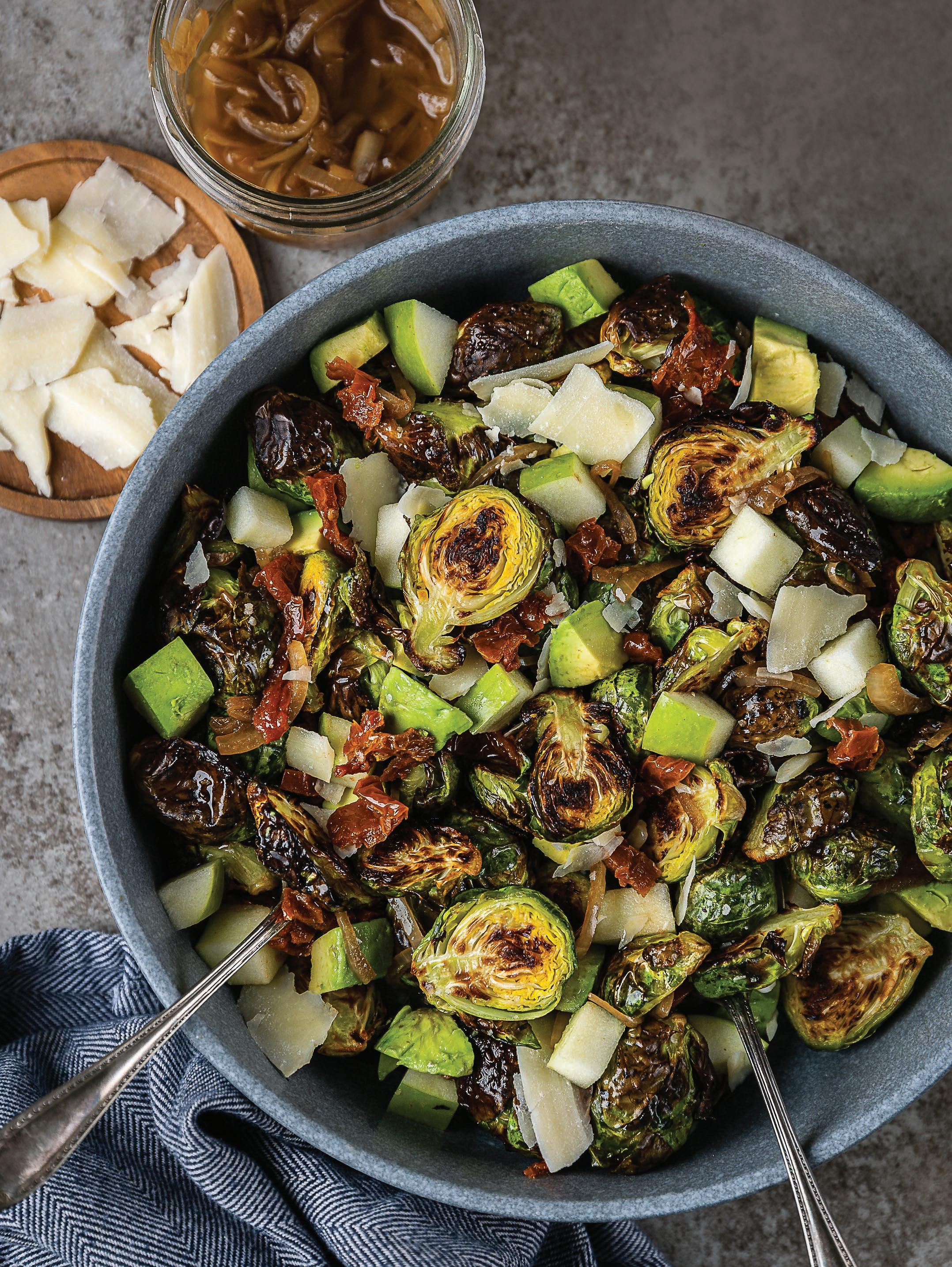
editor's note: Roasting brussels sprouts helps reduce their naturally bitter flavor by bringing out the sweetness in these cruciferous vegetables.
editor's note: When buying lamb, ask your butcher for local grass-fed sources.


The nutritional profile of lamb is impressive. A rich source of high-quality protein, and many vitamins and minerals, including iron, zinc, and vitamin B12; regular dietary intake of grass-fed lamb can promote muscle growth.
Calories: 517 | Fat: 12 g | Protein: 48 g | Sugar: 18 g | Carbs: 34 g | Fibre: 8 g | Sodium: 1269 mg | Cholesterol: 127 mg | Potassium: 1646 mg | Vitamin A: 4243 IU | Vitamin C: 64 mg | Calcium: 97 mg | Iron: 6 mg |
4 lamb shanks
1 Tbsp avocado oil
1 medium sweet onion, diced
1 large carrot, diced
4 cloves garlic, minced
1 Tbsp balsamic vinegar
2 Tbsp potato starch, or thickener of choice
5½ oz can tomato paste
2 cups quality red wine
2 cups natural beef broth
1 sprig fresh rosemary
1 bay leaf
1 medium eggplant, diced
1 medium zucchini, diced
1 red pepper, diced
10 kalamata olives, pitted and sliced in half, optional
Salt and pepper to taste
1. Preheat the oven to 350F.
2. In a 5-quart Dutch oven, or cast iron pot, heat avocado oil over medium-high heat.
3. Pat lamb shanks dry with a paper towel, season with salt and pepper, and sear on each side until you begin to see color in the lamb and in the pot.
4. Remove the shanks from the pot and set aside. Reduce heat to medium low. Add onions, carrots, and garlic cloves. Cook until the onions are translucent.
5. Add vinegar to the pot, scraping the bottom to deglaze the pan. Add tomato paste and starch, and stir thoroughly.
6. Add wine and stir until heavy and thick.
7. Add the broth and the herbs to the pot and stir to combine. Sauce should barely coat a spoon but not stick.
8. Return the shanks to the pot, arranging to ensure they are fully submerged in liquid. Cover pot with lid and cook in the oven for 2.5 hours.
9. Remove the pot from the oven and add in eggplant, zucchini, red pepper and olives. Return to the oven for 30 minutes.
10. Remove bay leaf and rosemary and serve.
A family history of bad bone health, a “terrifying” diagnosis, and a “bullying” doctor were not going to keep Sherry from living the life she loves.
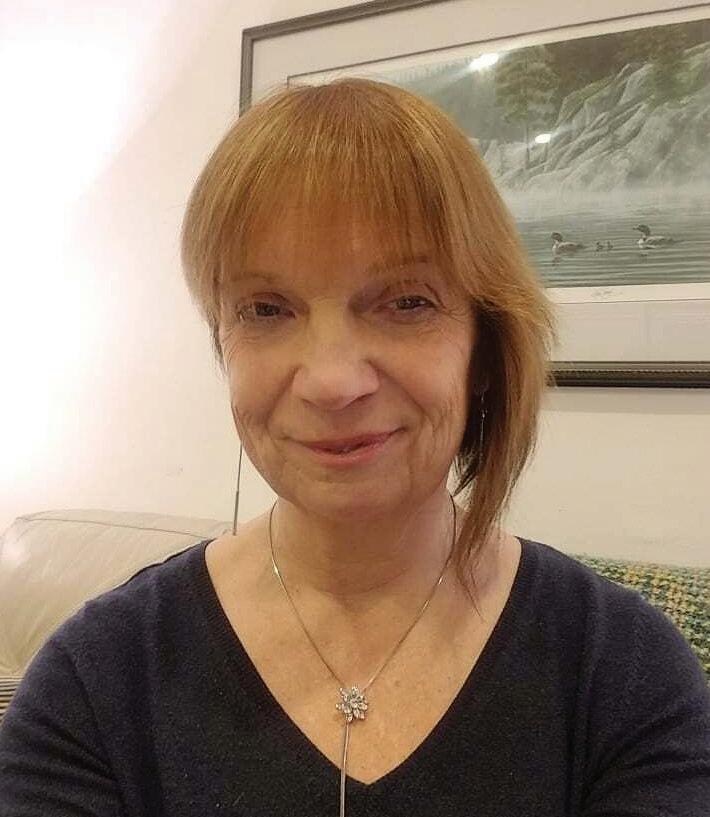
To say Sherry Dickson loves to dance is an understatement. If you think low bone density was going to stop her, well, then you don’t know Sherry.
A 30-year educator with experience teaching everything from kindergarten to a graduate course, Sherry has had a lifelong passion for dance, and a clear understanding of the realities of bad bone health.“My mother had severe osteoarthritis.”
In fact, Sherry was ”terrified” that she would wind up like her mother who spent the last ten years of her life with a walker.“I can’t imagine a life not being able to move,” she said.
That’s why in 2012, when she went from osteopenia to osteoporosis, she began taking a “top flight” calcium supplement, strontium, and vitamin D. She also began focusing on weight-bearing exercises.
Still, despite doing “everything right,” her bone density continued to get worse.
That’s when her doctor sent her to a medical research center in Montreal where she was told to start taking injections of a prescription bone-health drug. Sherry didn’t want her bone health to get worse, but she also wanted to make sure the recommended drug was the right solution for her.
Fortunately for Sherry, her epidemiologist brother-in-law had taught her how to evaluate pharmaceuticals by two factors: Number needed to treat (NNT) and number needed to harm (NNH).
Simply put, the number needed to treat refers to the number of patients that need to be treated to see a positive result. Similarly, the number needed to harm tells us
how many patients must take the drug before a patient will experience an adverse outcome.
Lower NNT and higher NNH values are associated with a more favorable treatment profile. In short, does the harm outway the benefit.
“It’s really interesting when you look at it from that perspective,” Sherry said.” After looking at the numbers, she concluded that she’d “have better luck in Vegas.”
“My likelihood of even getting a positive outcome was very low,” she added.
Despite her well-researched and informed questions, she wasn’t prepared for the “bullying” comment that came out of the bonehealth specialist’s mouth when she raised concerns about the drug he was recommending.
He told her, ”Ms. Dickson, I’m telling you that if you think you’re in pain now from osteoarthritis, then don’t come back and complain to me when in a year from now you’re in a wheelchair with a collapsed spine.”
“Imagine how I felt leaving,” she said. “I was devastated.”
Knowing her whole life that she had absorption issues, she began looking for higher-level supplements and supplements that have all the necessary nutrients.
That’s when she found AlgaeCal. “So when I read about AlgaeCal, I thought this company makes sense.”
After reading that AlgaeCal’s plant-sourced calcium was highly absorbable, she told herself, “this is worth a shot."
Along with continuing weightbearing exercises, Sherry began taking AlgaeCal. That was in March 2019. Just a few short years later in June 2021, Sherry got a followup DEXA scan, and the results had her jumping for joy. After years of seeing her bones slowly waste away, despite all her best efforts, her latest scan showed an amazing 18.2% increase in bone density!

Her primary care physician was extremely pleased he said “keep doing what you’re doing.” The specialist who told her she’d be in a wheelchair refused to see her again.
So what is she doing today? Dancing nearly every day. She calls Montreal the “Buenos Aires of North America,” because she can find someplace to dance Argentine Tango every day of the week. And in the summer that’s exactly what she was doing.
“I was literally dancing seven days a week.”
It was in October, when she was on her way to tango, that she discovered just how far her bones had come since her osteoporosis diagnosis in 2012.
“I was on the metro running just a little bit late, and I was running up the stairs for exercise from the metro level up to the street level.”
Sherry liked to take the stairs two at a time for exercise. When she looked up to see if her bus was going away she tripped on the last step. It was cement. She hit her right elbow first. Then the palm of her hand. Then her forehead.
“I smashed, I mean smashed into the concrete floor extremely hard.”
Her doctor told Sherry that most women that fall at her age have shattered wrists that take multiple surgeries and never great recovery.
But not Sherry. She came away from the potentially devastating fall with a concussion and just a tiny 2.5 mm fracture of the radial

head in her elbow. And no wrist damage.
Sherry believes that if the fall happened before she began taking AlgaeCal, that she would have likely also broken her arm and fractured her wrist. “I thought, ‘Thank God, AlgaeCal’.”
“I feel bad for the women out there like me who were terrified and were being bullied into a solution that wasn’t the right one.”
She had to pause doing weight-bearing exercise during her recovery, but was still able to continue dancing every chance she got.
“I live a very full and active lifestyle and plan to dance my way right through to my 90s, and AlgaeCal has made that possible. Thank you so much for developing this product and making my life so that I can live it to the fullest.”
Traditional calcium supplements can only slow bone loss. But the 13 nutrients in AlgaeCal’s plantbased calcium go one step further —they actually stop bone loss.
There’s a natural way to beat bone loss. Studies show that adding the 16 nutrients in AlgaeCal Plus to your diet can actually increase your bone density.
Pick up the phone and call one of our Bone Health Consultants now (Toll Free) 1–877–644–9916

Oxidative stress is at the root cause of bone loss. But research shows that certain antioxidants can reverse the damage caused by stress and help maintain healthy bone remodeling. Triple Power Omega-3 Fish Oil delivers 300% more fish oil, plus clinical doses of two powerful antioxidants (curcumin and astaxanthin) to target the root cause of bone loss.
ALGAECAL ALGAECAL PLUSAs women age, many experience a loss of bone density starting at age 40, leading to frailty and weakness in later life. But there are those who remain strong and active, even in their later years. So how do they do it?
If you get diagnosed with osteoporosis, it's like a nuclear bomb going off in your life. Suddenly, your mobility, independence, and ability to do basic daily tasks are in jeopardy. On top of that, people often feel scared and frustrated—not to mention the awful feeling that suddenly I got old. But don’t fret. With the proper knowledge and care, you can beat bone loss. And it starts with understanding how your bones strengthen and weaken throughout the different stages of life.
In your twenties, you hit what’s known as peak bone mass. This is when your bones are packed full of minerals. These minerals are like an insurance policy against bone disease as you get older. So the more you’ve got, the better it is. In fact, supplementing with calcium during your twenties can drastically reduce your chances of developing osteoporosis later down the line.1 But if you didn’t supplement with calcium back in your glory days, don’t worry. You can still replenish your bonestrengthening minerals and get your strength back. (More on this later).
CONTINUED ON PAGE 38

When it comes to bone health, your thirties are the goldilocks zone. Sure, your bones aren’t getting any stronger. But they’re not getting any weaker either. In fact, there's now a balance between bone breakdown and bone production. But there’s bad news on the horizon. That balance won’t last for much longer, and that’s why it’s important to reinforce your bones with as many bone-supporting minerals and nutrients as possible. And that’s because…
On the shelves of a Hallmark store, forty is the new thirty, but when it
comes to bone health, forty is still forty. That’s when we start to lose minerals from our bones. And every year, we lose more and more, which makes our bones weaker and weaker. In fact, studies show that after the age of forty, we generally lose about 1% of our bone density each year. Now losing 1% might not seem like a big deal, but the compounding effect of this steady loss can be devastating. Think of it like a game of Jenga. At the beginning of the game, the tower has all its pieces. So it’s solid and stable. But as the pieces are slowly removed, the tower becomes less stable and more prone to toppling over. It’s the same with bones. They become more brittle and prone to fracture as their mineral density slowly drops. And you want to hear some scary math? By the time you shop for an outfit for your fiftieth birthday party, you could already be missing 10% of your bone minerals! CONTINUED FROM PAGE 37

So here’s something every fortysomething woman should know —you’re losing minerals from your bones. Those minerals need to be replaced, and quickly. Because the worst is yet to come…
When we hit our fifties, we often feel confident and powerful. And rightly so! We’ve established ourselves in our chosen career and can enjoy the freedom that comes from having our children grown and out of the house. It’s a great time! But not for our bones…
As our hormone levels begin to shift during menopause, bone loss accelerates from 1% a year to 2%. That’s a lot. In fact, by the time many women emerge from menopause, they’ve already lost a whopping 20% of their bone density!2 That’s because the body is producing less estrogen, which up until now, has played an essential role in slowing down bone loss.3 So think about our Jenga tower again. It’s now missing 20% of its blocks. So it’s nowhere near as strong as it used to be. And the worst part? This is only your fifties! You’ve still got another, twenty, thirty, or even forty years of active living ahead of you.
Think about that for a second. How can you enjoy your golden years if your bones are too frail to golf, garden, or even go for a walk? Believe me, you don’t want to be the only ‘old one’ among your circle of friends. And you don’t have to be! You can beat bone loss.
See, it doesn’t matter what age you are. You can replenish the bone-strengthening minerals

that the years have stolen. In one groundbreaking health study, a team of American scientists discovered that an organic marine algae, lithothamnion superpositum (AlgaeCal), can help to replace lost bone minerals. It turns out that AlgaeCal is naturally filled with all the clinically-supported minerals your bones need to remain strong and healthy.
And the truly amazing thing? This mineral-dense superfood can actually increase your bone density. It’s true! Scientists published in The Journal of the American College of Nutrition followed 172 AlgaeCal users over 7 years. Each person underwent a bone scan at the beginning and end of the study. And guess what! AlgaeCal users increased their bone density by an impressive 7.3% over the 7year period. That's an average of
1.04% increase every year, for 7 straight years.
Now, remember that after the age of 40, we generally lose about 1% of our bone density each year. That means that if you’re using AlgaeCal, instead of losing 7% in 7 years, you're actually gaining 7%. That's a 14% swing! That’s like turning back the clock on your bone health for a full 14 years.
Imagine that! Imagine how it’s going to feel when your doctor tells you that your bones are getting stronger! Imagine the relief when you can take off for a brisk walk, hike, or even bike ride without a second thought about how it might affect your bones. Imagine the delight on your grandchild’s face when they see you on all fours...chasing them around the living room like a scene from the Wild West!
In fact, the only downside of increasing your bone density is that your friends might start pestering you with questions—they’ll all want to know how you did it!

Reviewed by
Dr. Loren Fishman, MD, PHDMedical Director of Manhattan
Physical Medicine & Rehabilitation and Founder of the Yoga Injury Prevention Website.
Sources
1. https://pubmed.ncbi.nlm.nih.gov/36164828/
2. https://www.endocrine.org/patient-engagement/ endocrine-library/menopause-and-bone-loss
3. https://pubmed.ncbi.nlm.nih.gov/9254647/
A lot of women rely on calcium to protect their bones. Here’s why that might be a terrible mistake.
The next time someone tries to tell you that traditional calcium supplements are enough to prevent fractures, you can be sure to tell them they’re wrong. That’s according to a team of scientists writing in the British Medical Journal. After analyzing 120 separate studies, researchers concluded that calcium supplements don’t prevent fractures.
See, bone loss isn’t caused by a lack of calcium alone. It’s caused by a loss of all the minerals that make your bones strong. In fact, clinical studies show it takes a total of 13 minerals and 3 vitamins to make your bones stronger.
And that’s why traditional calcium supplements just don’t cut it. They're only providing your bones with one of the 16 nutrients they need to stay strong and healthy. It’s not enough! It’s like trying to bake a cake with nothing but flour.
That’s the realization that Viki, an Oregon farmer, came to in 2011. As a dairy farmer, she’d always enjoyed a calcium-rich diet. But when a routine DEXA scan revealed bone loss, she was devastated.
What's worse was that the “treatments" for her condition came with all sorts of side effects that she wasn't willing to risk.
And that’s when she made the same mistake millions of women make every day...
She doubled down on calcium. She faithfully swallowed her chalky pills every morning and evening, thinking they would save her bones. But it didn’t work. Follow-up bone scans revealed that her bones were still getting weaker. “Over the years, I’ve taken various calcium supplements, but my bone health continued to decline,” she said.
Feeling scared about what this meant for her 60s, 70s, and beyond, she decided to take action and searched the internet for a better solution. That's when it hit her. The technicians at her bone scan weren’t testing her bone calcium density. They were testing her bone mineral density. She wasn't suffering from calcium deficiency— she had a mineral deficiency!
The science is clear on this one. When we’re young, our bones are packed with minerals. That’s what
keeps them strong and sturdy. But sometime after our 40th birthday, we start losing those minerals. And every year we lose more and more, which makes our bones weaker and weaker.
Little wonder that half of all American women over 50 can expect to break a bone due to low bone density, according to the National Osteoporosis Foundation. All because we’re losing the essential minerals that keep our bones healthy and strong. But don’t despair—there’s good news.
After conducting a year-long health study, scientists made a remarkable discovery. A unique marine algae, lithothamnion superpositum (AlgaeCal), can help to replenish lost bone minerals. Hand-harvested from a beach in South America, AlgaeCal is naturally filled with all the clinically-supported minerals your bones need to remain strong and healthy.
Teams of scientists, researchers, and professors from Harvard Medical School, Georgetown University Medical Center, and the University of Connecticut
have conducted extensive studies on AlgaeCal, and all the research yielded the same fantastic result —AlgaeCal is the only natural supplement that's been proven through human studies to increase bone mineral density. That's why Health Canada—the Canadian Government Department of Health —has given AlgaeCal the go-ahead to use this remarkable claim!
“AlgaeCal can help increase/improve bone mineral density.”
Take a moment to think about that. As we grow older, we tend to assume that our health will only get worse. We simply accept that deteriorating bone health is a natural part of the aging process. But who would expect to be healthier and stronger than they were 1, 2, or even 20 years ago? That’s something that many of us never consider!
But that's what happened to Viki. Her most recent bone scan showed that her bone mineral density was actually increasing—which means she was getting stronger and feeling stronger too! And she's definitely not alone in this.
Scientists published in The Journal of the American College of Nutrition followed 172 AlgaeCal users over 7 years. Each person underwent a bone scan at the beginning and end of the study. The results were amazing. AlgaeCal users increased their bone density by an impressive 7.3% over the 7-year period. That's an average of 1.04% increase every year, for 7 straight years.
Now, that might not sound like much but here's why it's such a big deal: After the age of 40, we generally lose about 1% of our bone density each year. So if you're using AlgaeCal, instead of losing 7% in 7 years, you're actually gaining 7%. That's a 14% swing! That’s like turning back the clock on your bone health for a full 14 years.
So there’s no need to accept deteriorating bone health as “a part of getting old.” This safe, natural, and risk free solution can increase your bone density in no time! In fact, most people see measurable results in as little as
6 months. And if you don’t, you’ll get a full refund.
You can’t say fairer than that, can you! So why not call one of our friendly Bone Health Consultants today, and see if AlgaeCal is right for you. You can reach them at 1–877–644–9916.

Best-selling
By Lara Pizzorno, MDIV, MA, LMT
The AlgaeCal Community is an exclusive Facebook Group for AlgaeCal customers. More than 23,000 members celebrate their successes, share their challenges, and even make new friends! Most of all, they support one another on their journey to better bone health.
 Lisa Chaika
Lisa Chaika
I have EXCITING news! I saw my doctor today and my bone density improved 3.8% from my last DEXA scan a year ago. I’ve been taking AlgaeCal and Strontium Boost for a year now. My doctor said he was very very pleased. He actually couldn’t believe it. He said he never sees increases like this. I left him with my AlgaeCal newsletter and he agreed to read it. I’m so happy! Stick with it and don’t give up.

132

Megan Wong Admin
This is such fantastic news, Lisa!!!! Congratulations and thank you for taking the time to share! Love that your doctor is celebrating alongside you and wanting to learn more about AlgaeCal.
EDITOR’S NOTE: Lisa's exciting results generated hundreds of reaction icons from Community members. Dozens commented to celebrate, and several said they also told their doctors about AlgaeCal products. Lisa added that she does some light weights and elliptical machine workouts and takes 1 tablespoon of Triple Power Omega 3 Fish Oil per day.
Got questions about your bone health? Get them answered in The AlgaeCal Community. Or send them directly to support@algaecal.com We’re here to help guide your bone health journey.

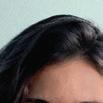











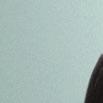
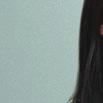


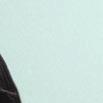
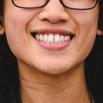




When it comes to your bone health, little changes to your everyday routine can make a big difference.
Improving your bone health doesn't require major lifestyle overhauls, just small steps that can add up over time. So it's never too late to make positive changes, no matter where you are in your journey to better bone health.
Imagine exercising 90% of your body’s muscles with a simple technique that works for all physical abilities and adds an adventurous twist to the everyday.
Well, that’s Nordic pole walking. Burn around 400 calories per hour while having fun. It’s more effective than walking!
By Dr. Emma Gasinski



1
PrePare your Poles. Set them at 65–70% of your body height. Hold them vertically. And bend your elbows at a 90-degree angle.
2
slide in. Place the loop attached to your handle over your hands and tighten to your liking. Make sure your palms are facing you. Slide the straps over your wrists. Grip the poles lightly.




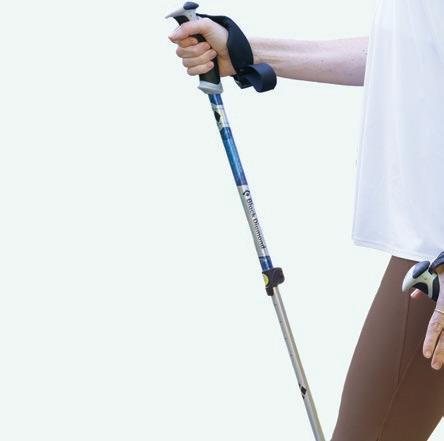


start WalKinG.
Don’t put the poles down just yet; you need to get a cadence first, walking heel to toe. Lengthen your stride and swing your arms.

4
draG your Poles.
Let your poles drag behind you at a 45-degree angle as you continue your strides.


Plant and PusH WitH your Poles.


Grip the poles and plant the tips at the same angle you were dragging them. Push down on the pole as you take each step to propel you forward. Your right arm and left leg move together, and vice versa.
tailor tHis exerCise to you
If you aren’t ready to use the poles on trails or uneven ground, get rubber tips that allow you to walk on pavement. If you are comfortable with your balance, try some different terrains and inclines!
To see a video of Nordic Pole Walking, visit algaecal.info/ nordic-pole-walking-swg or scan the QR code below.





Dr. Emma Gasinski, PT, DPT, RYT
Emma has a Doctorate in Physical Therapy from Rocky Mountain University of Health Professionals and is a certified yoga teacher. She's passionate about giving the body tools to heal through movement and nutrition.
My colleagues and I developed and tested twelve yoga poses that are proven to safely improve bone health through yoga.
Cat, our registered yoga instructor and AlgaeCal Community Manager, will demonstrate one of these bone strengthening yoga poses for you. Now you can try it from the comfort of your own home!

To watch the full 12 yoga pose series, type this URL into your web browser or scan the QR code below: algaecal.info/ yoga-for-osteoporosis-swg

1. Step your feet apart so that your ankles line up under your wrists when your arms stretch to the sides. Turn your right foot and leg 90 degrees to the right (don’t turn your torso).
2. Rotate your left foot 30 degrees toward the right. Align your right heel with the ankle of your left foot. Inhale and stretch your arms firmly, pulling your shoulder blades toward your spine.
3. Exhale and incline your torso to the right without bending or turning it. Place your hand over your ankle. Rest your left hand on your waist. Lengthen out through the spine.
4. Exhale and shift your hips more to the left. Extend your torso out over your right leg, bending at the hips, not the waist. Retain your torso in the plane defined by the intersection of your legs.
5. Roll your left shoulder, left ribs, and left waist back and up, remaining steady in your legs. Stretch your left arm straight toward the ceiling. Turn your head to look up at your left hand.
6. Hold for 30–40 seconds breathing fully and stretching side to side as well as head to tail. Inhale as you come back up. You can take a moment here to rest, if you like. Repeat on your second side.
 MD, PhD
MD, PhD
Medical Director of Manhattan Physical Medicine & Rehabilitation and Founder of the Yoga Injury Prevention Website.
Benefits: This pose stresses the greater trochanters (part of the upper thigh bone), anterior lumbar and posterior thoracic vertebrae (upper and lower spine), and pubic bones. It helps build stamina, focus, and balance.
ContraindiCations: Total hip replacement (anterior approach), plantar fasciitis, torn adductors, imbalance (use wall), inguinal hernia. Pitfalls: There is a tendency to angle the torso forward when revolving it.
HelPful Hint: Start the opening by revolving the back leg’s knee upward. Let the upper leg’s groin get long; the lower leg’s groin will get wide.
tailor tHis exerCise to you: The wider your stance, the more freedom you’ll have in the hips. But don’t go so wide as to lose stability! Your knees may want to bend and your upper body will tend to shift forward. Keep your legs straight, your leg muscles firm, and your torso lined up directly above your front leg.
ProPs: A mat.
Myofascial release (also known as ball rolling) is a practice that applies gentle pressure on targeted areas of connective tissue (fascia) that surround your muscles and bones. By rolling out key areas, you can relieve tension, release stress, and help the body relax overall. And who doesn’t need that during the holidays?




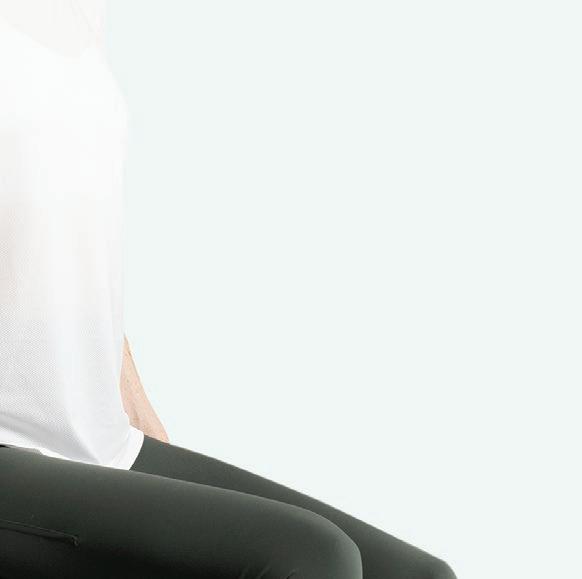



Have a seat and station your lower legs perpendicular to the floor. Place the ball just behind the knuckles of your toes.


Roll the ball forward. Keep your foot pointed down.






tailor tHis exerCise to you
Roll back and take your heel down toward the ground. Be gentle and don't apply too much pressure.
If you are feeling intense sensation, change your approach by using a softer tool. Or you could place a blanket over the ball for more support. If your breath becomes restricted or choppy, that’s an indication that you have applied too much pressure. So start slow and be gentle.
To perform these moves you’ll need a lacrosse ball and small towel or pillow. A tennis ball is a good alternative if you would like to apply a more gentle pressure.

4


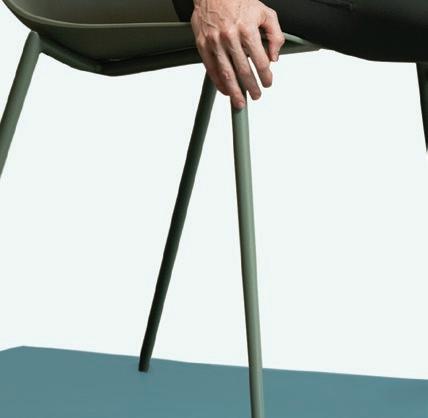


If you find a spot that is sensitive or uncomfortable, work around the spot. Don't jam the ball into that spot.
This is just one of many selfmyofascial release techniques you can use to restore healthy fascia. Learn how to release tension from your foot all the way up to your shoulder in AlgaeCal’s self-myofascial release tutorial videos. algaecal.info/fascia-swg




Do this move for 2-5 minutes on each foot to relieve tension.
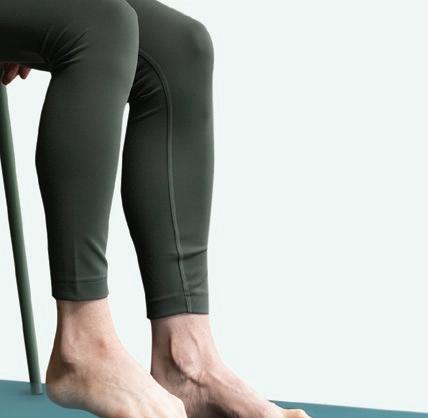




 Dr. Emma Gasinski, PT, DPT, RYT
Dr. Emma Gasinski, PT, DPT, RYT
Emma has a Doctorate in Physical Therapy from Rocky Mountain University of Health Professionals and is a certified yoga teacher. She's passionate about giving the body tools to heal through movement and nutrition.
Did you know there’s a new condition that’s even worse than osteoporosis? And not only is it new—it’s growing. Don’t fret though. We’re going to tell you everything you need to know to keep this painful condition from wreaking havoc on your body.
 By Dr. Loren Fishman, MD, PHD
By Dr. Loren Fishman, MD, PHD
Sources
1. https://www.ncbi.nlm.nih.gov/pmc/articles/ PMC5963675/
2. https://www.ncbi.nlm.nih.gov/pmc/articles/ PMC7296259/
3. https://pubmed.ncbi.nlm.nih.gov/26273298/
4. https://www.racgp.org.au/getattachment/.aspx
5. https://www.mdpi.com/2411-5142/6/2/55
6. https://link.springer.com/article/10.1007/ s11517-018-1814-3
7. http://blogs.creighton.edu/heaney/2013/01/ 04/calcium-the-real-story
8. https://pubmed.ncbi.nlm.nih.gov/26797090/
9. https://pubmed.ncbi.nlm.nih.gov/25912213/
A quick puzzle for you: what do you get when you combine bone loss and muscle loss? If you guessed osteosarcopenia you’re way ahead of the game.
As you can imagine, not many people know about this underrecognized and undertreated chronic musculoskeletal condition.
So today we’re shedding light on the inner workings of osteosarcopenia and what you can do to keep it at bay.
Osteosarcopenia is a condition that describes the combined effects of osteoporosis (bone loss) and sarcopenia (muscle loss).1
It’s especially common among seniors. That’s because muscle mass and bone mineral density steadily decline by about 1–1.5% per year after age 65.2
Osteosarcopenia sufferers are at a much higher risk of falls, fractures, and hospitalizations than those who just have osteoporosis or sarcopenia. In fact, a study of 316 elderly Chinese adults found that the odds of frailty were much higher in osteosarcopenic patients compared to osteoporotic or sarcopenic patients alone.3
There’s one thing you should know about osteosarcopenia. It’s sneaky. In most cases, it doesn’t show any symptoms. That’s right—not a single one. Zero. Zilch. Nada.
So how are you supposed to know if you have it?
A past record of falls or fractures should trigger a red flag. And that’s when your doctor should look into the possibility of osteosarcopenia.
Since osteosarcopenia represents the combined effects of osteoporosis and sarcopenia, it’s vital that you pay attention to the risk factors of both these conditions.
Risk factors for you to be on the lookout for include:4
• older age
• gender (female)
• high alcohol intake
• oral glucocorticoids
• menopause
• low protein intake
• low BMI
• current smoking
• low dietary calcium
• low serum vitamin D
• hypogonadism (in men)
• hyperparathyroidism
• obesity
• rheumatoid arthritis
• living in residential agedcare facilities
• chronic kidney disease
• low mobility and function
Did you know that your bones and muscles can communicate with each other? It's true—the way their cells interact is so unique and exciting, it's like they're having a chat!
And understanding this “musclebone crosstalk” is the key to getting the advantage over osteosarcopenia. To help with that, let’s take a look at Wolff's law. This 19th century law states:
“The architectonic of a bone follows the lines of force to which that bone is exposed.”
In other words, a bone will adapt to the loads it’s exposed to. And this is great news—especially if you do weight-bearing exercises. When your bones have weight placed on them the load forces
your bones to strengthen. How does this happen?
Well, weight-bearing exercise ensures your osteocytes (cells located in your bones) actively signal new osteoblasts—bonebuilding cells—to form.5, 6 But that’s not all they do.
Your osteocytes also signal the growth of your muscle cells.
All this signaling or “cross talking” among your cells activates the renewing and strengthening process that keeps your bones and muscles healthy.
Since osteosarcopenia is all about the dreadful loss of both bone and muscle mass, it makes sense to do weight-bearing exercises. In doing so you’ll strengthen both your bones and muscles at the same time. Talk about a win-win!
CONTINUED ON PAGE 52

CONTINUED FROM PAGE 51
So we get how important it is to do weight-bearing exercises to keep osteosarcopenia in check.
But since osteosarcopenia mainly affects the elderly, it’s important to focus on exercises that won’t put too much pressure on the body.
So that means weight-bearing activities like running, jumping, or high-impact aerobics are off the table. But don’t worry. There are other options that are just as effective including:
• walking
• hiking
• dancing
• gardening
• climbing stairs
All of those weight-bearing exercises are easier on the body and great for strengthening your bones and muscles!
Another way you can improve your bone and muscle health is through your diet. As you likely know, getting plenty of calcium daily is key to having strong bones. But your bones need more than calcium, they also need protein.
According to Dr. Robert Heaney, internationally recognized expert in the field of bone biology and calcium nutrition:
“Protein is necessary if calcium is to help us build or rebuild bone.

Recall that bone is about 20% calcium by weight but 50% protein by volume.” 7
It’s recommended that older adults consume 1–1.5 grams of protein per kg of body weight.8 By giving your body the protein it needs, you’re not just helping your bones, you’re also improving your muscles.
Want to know what else helps you improve your muscle health? Vitamin D. It’s been shown to have many beneficial effects including:
• increased muscle strength
• decreased mortality and falls
• functional improvement
It’s recommend that adults take 800–2,000 IU/day.9
So do your bones and muscles a favor and take a high-quality vitamin D supplement and maintain a well-balanced, nutrient-rich diet with plenty of protein. Combine that with doing weight-bearing exercises regularly and taking a daily calcium supplement like AlgaeCal Plus and you’ll be able to keep osteosarcopenia in check.
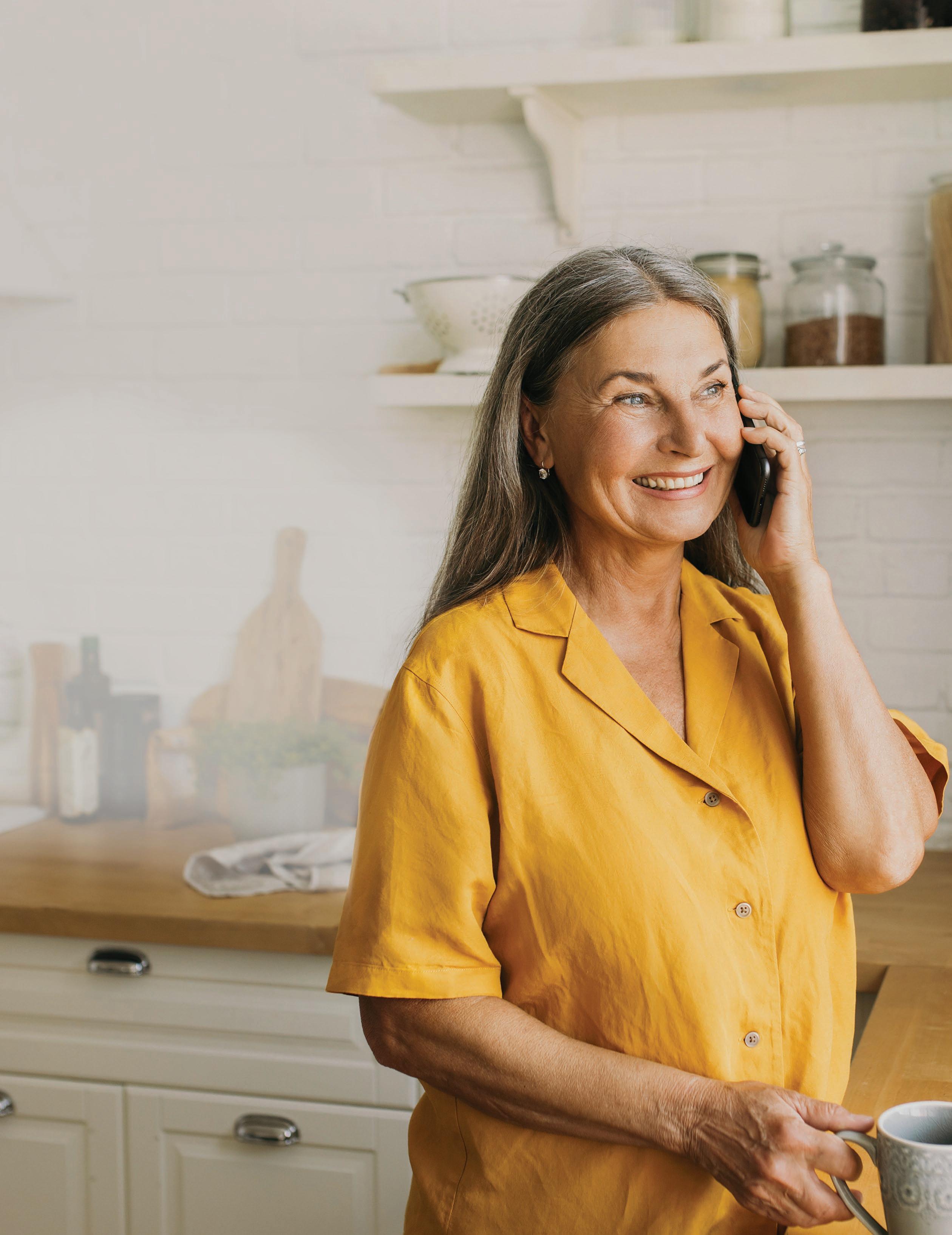
AlgaeCal offers unparalleled customer service, and our Bone Health Consultants are the living, breathing embodiment of everything AlgaeCal stands for. They’re available 7 days a week to answer any questions you may have about your DEXA scan, nutrition, or any other bone health topic. It’s a completely free service. So give us a call. Here’s our phone number :
1–877–644–9916
Kendra loves to sing and also plays the guitar, piano, and ukulele! Our budding musician has YouTube channel aspirations and even has an original song published on Spotify.
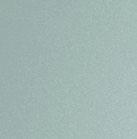
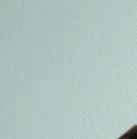


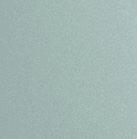


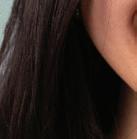
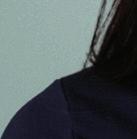
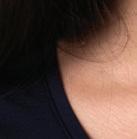


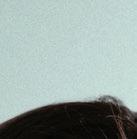
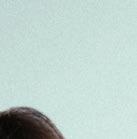


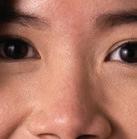

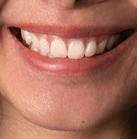
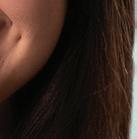



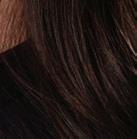




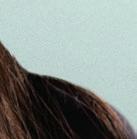

As far back as she can remember, Kendra was always fascinated by human behavior. (That’s why she took the leap and moved from Indonesia all the way to Canada to study psychology!)
And while she’s all about understanding and helping people, she’s just as passionate about health. In fact, because of a medical incident with her bones when she was younger, Kendra’s always wanted to help others get the information they need to maintain their health. That’s what led her to discover AlgaeCal after she graduated with her psych degree. She was drawn to the vision of the company—that they help people lead healthier, more fulfilling lives. She also loved that they’re research-driven, which fit well with her university experience reviewing data and studies.
Fast forward nearly three years now, and Kendra’s a proud AlgaeCal team member! She says, “As Bone Health Consultants, you can’t help but feel very invested in the customer journey. We all know bone loss is no joke. So to see the relief and peace of mind that customers get from seeing improvements on their DEXA [scans] is very rewarding."
“I think we’re very lucky that we have this thing that’s bigger than ourselves and motivates us every day. It’s fulfilling to hear people say how much they shock their doctors. It keeps us moving and going every day.”
Her advice to people who are concerned for their bones and unsure of what to do? “I know it can be very discouraging. But you can improve your bone density, naturally. It’s never too late. I’ve spoken with 90-year-olds and even they’ve seen improvement. So we’re here to support you in any way you need, seven days a week. Please call us. We want to see you succeed. Remember, it’s never too late!”
In her spare time, Kendra is a foodie. A one-time vegan, Kendra loves experimenting with new recipes from different cuisines. She tries to make healthier versions of various dishes.
Yoori loves traveling. Her goal is to visit a new country every year. This year, she’s eyeing up Japan.

Yoori’s journey into the AlgaeCal world wasn’t your typical one.
In fact, it began while she was attending a theatrical play in her native Korea. Yoori put her name in a draw to win a medical checkup prize package. And sure enough, she won! One of the prizes happened to be a free DEXA bone scan.
Even though she was young, she decided to take the scan. And boy was she shocked. Osteoporosis at 25! Her doctor shrugged it off, passed her a bottle of pills, and told her to take them.
Soon after, Yoori came to Vancouver looking for a job. As luck would have it, the AlgaeCal HR team found Yoori’s profile on LinkedIn and thought she’d make a fine Bone Health Consultant!
When Yoori discovered what AlgaeCal was all about, she knew it was a sign. Here was a natural way for her to combat her unexpected osteoporosis —and work for a caring company like she always wanted! Yoori was offered the job, took it, and then started on her own AlgaeCal regimen.
Today, Yoori’s applying her psychology background with her own bone health experience to help customers like you. It makes sense, because after all, “I was in the same boat!” she says.
When asked what she enjoys most about her day-to-day, Yoori said, “I enjoy saving lives. It’s music to my ears when I see customers’ increases, particularly those who were in the severe range and were deeply concerned about their bone health.”
Oh, and as for Yoori’s bone health? Well, after 2 years on the AlgaeCal protocol, she recently got her follow-up scan. Result: a 12% increase in her spine and a 14% increase in her hip. She was thrilled!
As Yoori says, “I don’t know where I’d be right now without AlgaeCal.” We don’t want to know where we’d be without you, Yoori!
Bernice is one of the most active people in the AlgaeCal office. When she’s not on the phones, you may find her on the volleyball court, cycling along Vancouver’s beautiful sea wall, or even taking to the water itself in a dragon boat!





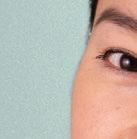

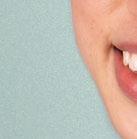



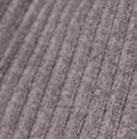
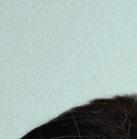



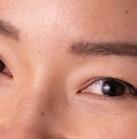


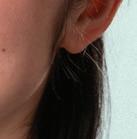
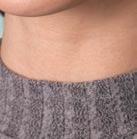









The wonderful Bernice has been gracing the phones of AlgaeCal since Fall 2020. She’s here to answer your questions on all things bone health, and we’re as lucky to have her as you are!
Health and wellness have always interested Bernice. So much so that her school friends would seek her out when they had questions on anything health-related. You could say that Bernice was destined to end up with us here at AlgaeCal. But her career first took a detour around the globe (several times). After graduating, Bernice left her home city of Toronto to scratch the travel itch—and hone her customer service skills—working as an air hostess with Emirates. Her favorite destination over the years? “Probably the Philippines, because I learned how to dive there. I’m a bit of an adrenaline junkie and I especially love diving!”
When that adventure came to an end, Bernice discovered AlgaeCal and was drawn by her longstanding interest in health and wellness and the opportunity to help people on a daily basis.
“Every day is so rewarding because the women and men I speak to remind me that age is not a limit. And I love that I’m not just answering questions about bone health, but building relationships and hearing people’s stories too. It makes it all the sweeter when someone I’ve helped on the phone calls in to tell me they’ve increased their bone density!”
We know that bone health can be an overwhelming topic. That’s why Bernice is here to help you understand it, help you tailor your journey, and cheer you on towards healthy bones. So, if you have questions or just need support, give Bernice or another of our wonderful Bone Health Consultants a call. It’s a completely free service. And as Bernice puts it, “I would always encourage people to call in because we want to set you up for success, and it’s important to touch base on things like scheduling, how to properly take the supplements, and exercise and nutrition. These are all key things on your journey to better bone health.”


Clinically supported to increase bone density in as little as 6 months. And best of all? The results are guaranteed.
alMost a Quarter of a Million WoMen have surprised their doctor by increasing their bone density! And the best part? They did it safely, naturally, and without any side effects. It’s all thanks to the Bone Builder Pack from AlgaeCal. Studies show it’s the only natural supplement that makes bones stronger. And we’re so confident of our product that we can guarantee the results.*
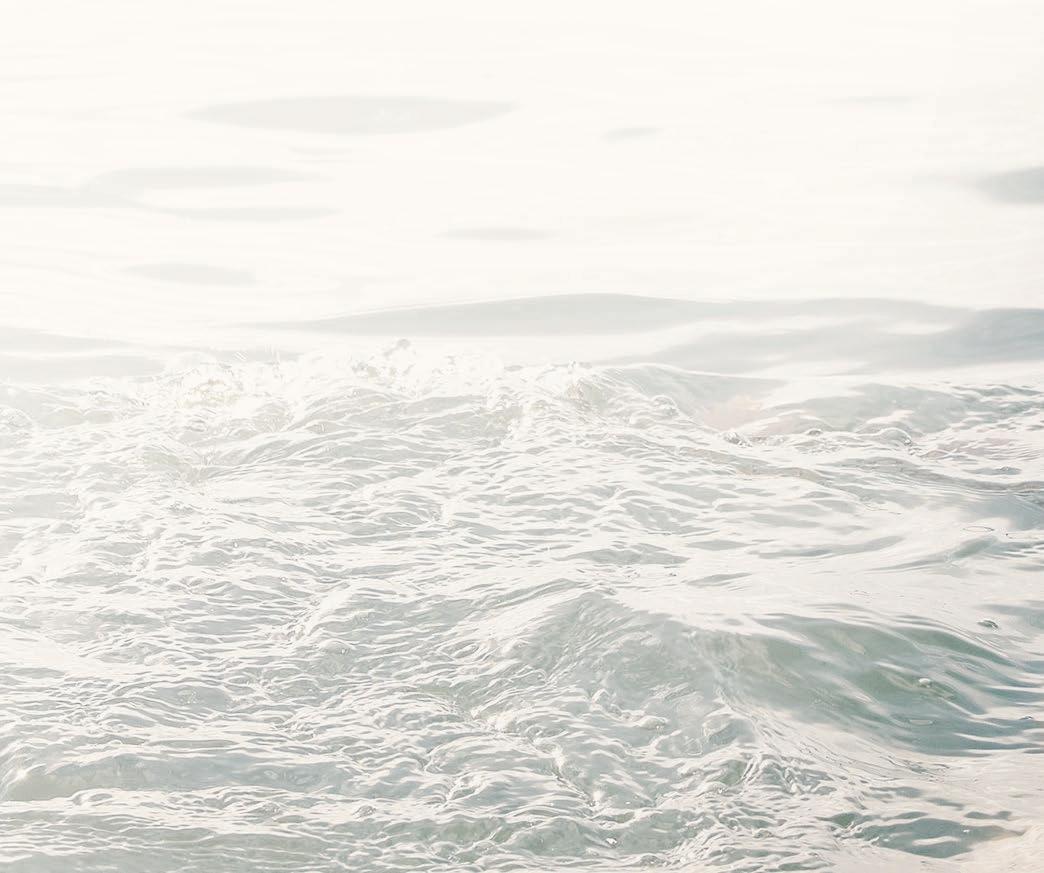

* You will see increased bone mineral density on every DEXA scan you take, starting as soon as 6 months. If any scan shows a decrease, you will be refunded for all purchases between that scan and the last.


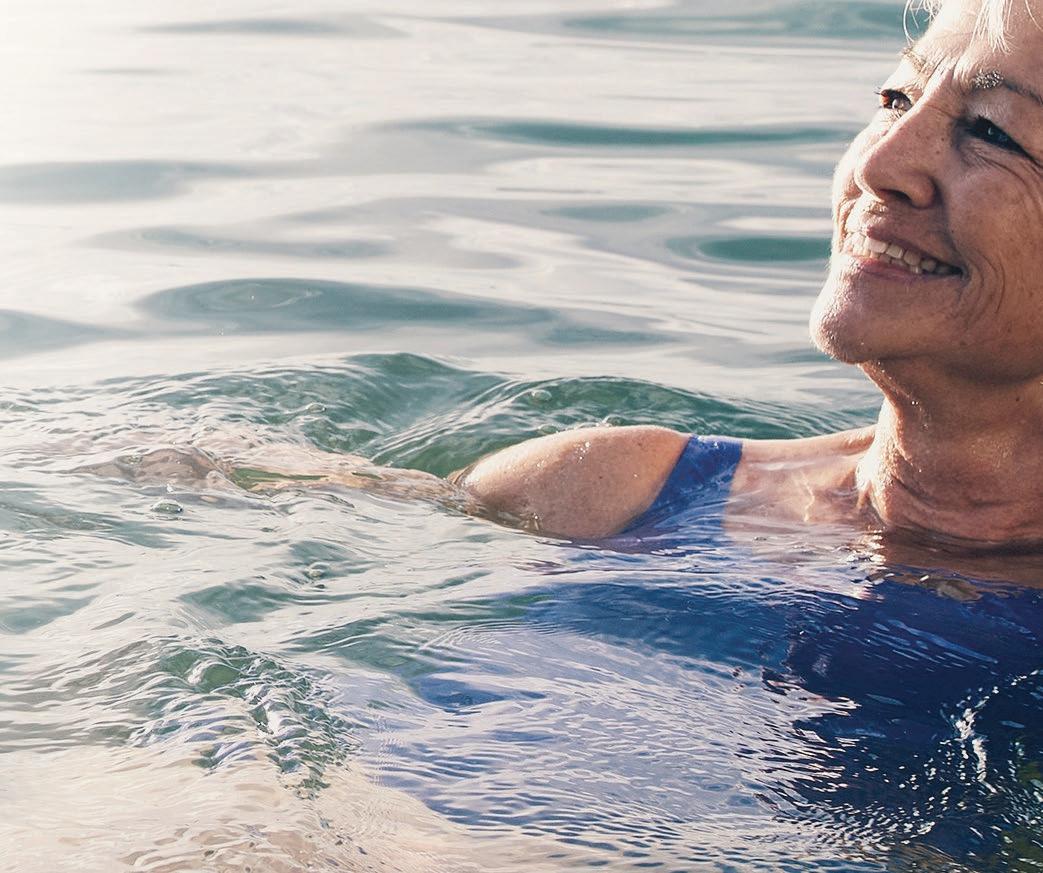





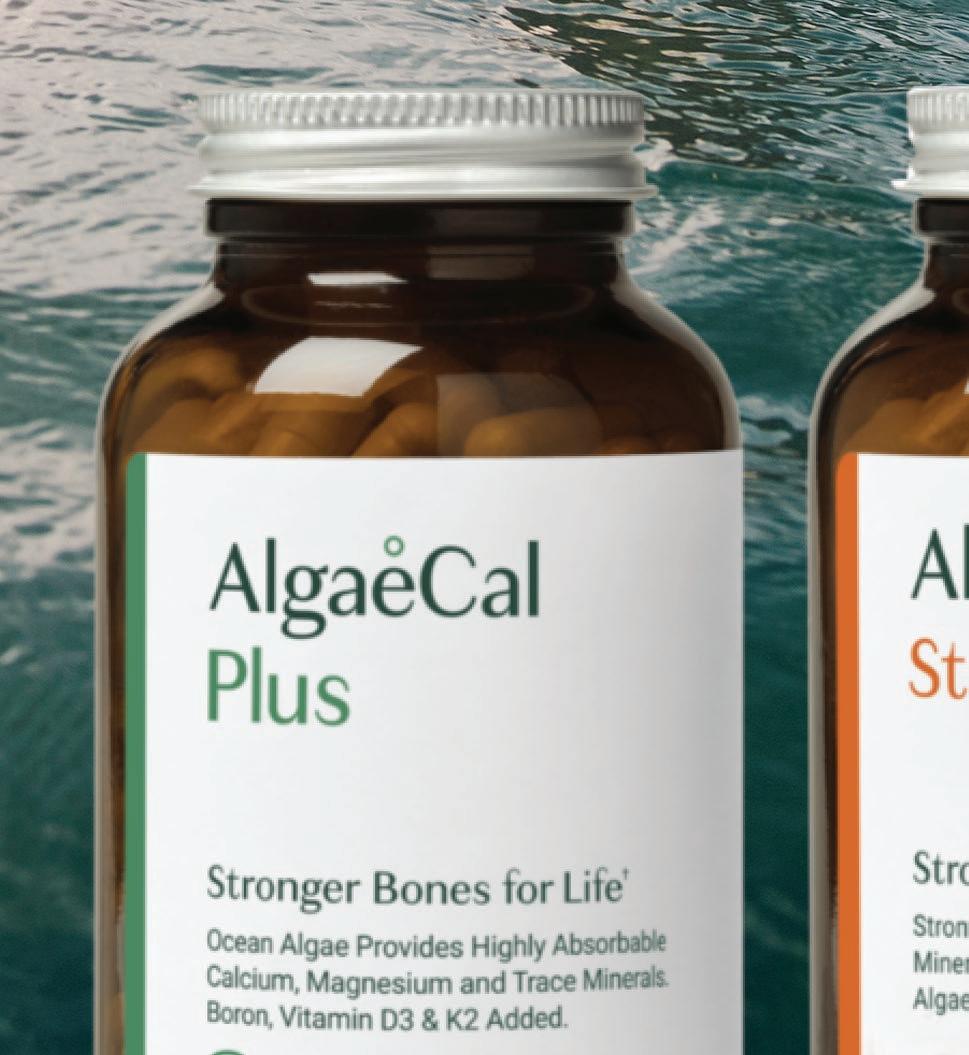

If you’ve researched bone health even for a little while, you’ve likely heard of strontium. And chances are, the reviews are mixed. But now it’s time to set the record straight!
Myth #1: Strontium Increases Fracture Risk
There are two “types” of bone— cortical and trabecular bone. Think of it like an M&M candy. The cortical bone is the hard, outer shell. While the trabecular bone is the soft, spongy inside.
Some strontium critics claim that strontium causes cortical bone to become thicker, which may increase risk of fractures. But as you’ll see, there’s no scientific proof for that claim. First, the trace amounts of strontium that end up in our bones prefer to do so in trabecular (spongy) bone.
Multiple studies refute the claim that strontium increases fracture risk. Here are excerpts from two of them:
“In conclusion, taken up by bone, Strontium... induced no major modifications of the bone mineral at the crystal level. As a result, a treatment with Strontium should not induce any alteration of bone mineral.1”
Nowhere does the study show strontium weakening bone.
The second study drew this conclusion:
“Strontium...is the only treatment proven to be effective at preventing both vertebral and hip fractures in women aged 80 and over.2”
Again, the study says nothing about strontium weakening bone structure. And neither study
shows strontium depositing primarily into cortical bone.
Myth #2: Strontium Supplements Have Side Effects
Chock this one up to a simple (yet crucial) misunderstanding. Remember, strontium itself is a natural mineral. But it isn’t active on its own. What that means is that strontium attaches itself to other compounds to remain stable. Unfortunately, some pairings can lead to unanticipated results.
You see, in the late 20th century, a pharmaceutical company developed a new form of strontium called strontium ranelate. It was strontium combined with ranelic acid. Ranelic acid is a synthetic compound that’s potentially toxic.
The company patented the new formula and sold it as a prescription drug. And soon after, a laundry
list of awful side effects came pouring in.
It’s important to know that strontium ranelate is NOT available in North America. So you wouldn’t be exposed to it if you’re considering strontium in your bone health plan.
Now, here’s some good news about strontium. When it’s combined with citric acid—like you find in oranges and lemons—strontium has an excellent safety record. Strontium paired with citric acid is called strontium citrate. And this is the form associated with stronger, denser bones–and even lowered fracture risk! Which brings us to myth #3.
The belief is strontium can overstate bone mineral density (BMD) on DEXA scans. Now, it’s true that

strontium weighs more than double calcium. But any overstatement on DEXA scans is minor at worst.
Strontium atoms replace less than one calcium atom out of 10, so the overestimation is not great enough to ignore DEXA results showing increased BMD.
The latest science shows strontium may overstate readings by 8.5%–11.2%.3 But don’t throw the baby out with the bath water! Even after adjusting your score down by 10%, an increase in bone density is still an increase!
For example, a patient who gained a modest 1% on DEXA after taking strontium citrate would still have realized approximately 0.9% BMD increase. That’s a big win when the norm is to simply lose more and more bone with time!
CONTINUED ON PAGE 60

Sources
1. https://pubmed.ncbi.nlm.nih.gov/ 8864905/
2. https://pubmed.ncbi.nlm.nih. gov/18046914/
3. https://pubmed.ncbi.nlm.nih. gov/20699129/
4. https://pubmed.ncbi.nlm.nih. gov/15336592/
5. https://pubmed.ncbi.nlm.nih. gov/21492428/
6. https://doi.org/10.1080/ 07315724.2015.1090357
CONTINUED FROM PAGE 59
Don’t be fooled by the strontium critics. The increased density in the strontium studies (including the AlgaeCal studies) are still outright increases in bone density for older adults who should be losing bone. And increased bone density is closely correlated with lowered risk of fracture.
Besides, strontium has been shown to reduce fracture risk independent of bone density.4
It should be noted that strontium and calcium are absorbed at the same absorption sites in your intestine. That means strontium competes with calcium for absorption. But calcium wins every time. This is why you should always
separate strontium and calcium supplements by at least 2 hours.
The Big Takeaway: Strontium is a safe, natural mineral. When an artificial compound (ranelic acid) is added to strontium, the ranelic acid can disrupt your normal bodily functions. This is the culprit behind the much-publicized “strontium side effects.”
But when citric acid is added to strontium, the resulting strontium citrate is safe and even helpful in increasing BMD while lowering fracture risk!
Add strontium citrate to your bone health regimen, and reap the rewards of stronger bones! 5,6 You can get a clinically-supported dose of strontium citrate in AlgaeCal’s Strontium Boost.

AlgaeCal has enlisted the guidance of the bone-health industry’s leading experts to form AlgaeCal’s Scientific Advisory Board! The board is composed of doctors, authors, and innovators at the forefront of bone-health research. See the next page to learn more.




 Dr. Liz Lipski
Lara Pizzorno
Prof. Didier Hans
Dr. Loren Fishman
Dr. Liz Lipski
Lara Pizzorno
Prof. Didier Hans
Dr. Loren Fishman
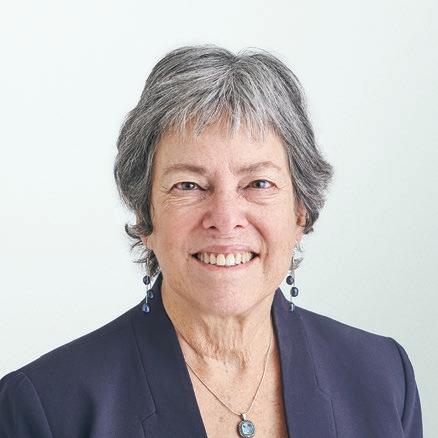
“Nutrition is key to every component of your body, and that goes for your bones too.”
PHd, Cns, faCn, ifMP, BCHn, ldn
Professor and Director of Academic Development, Nutrition Programs in Clinical Nutrition at Maryland University of Integrative Health
Dr. Lipski has spent over 30 years researching—and educating people about—the connection between digestive health and chronic diseases, including osteoporosis. As Dr. Lipski puts it, “if digestion isn’t working, then nothing is working.” She’s authored several books, including the comprehensive Digestive Wellness and its online companion course, “The Art of Digestive Wellness".

“With proper nutrition, regular exercise, and the knowledge to tackle underlying issues, it’s absolutely possible to have strong bones for life.”
MdiV, Ma, lMt
Author of Healthy Bones Healthy You! and Your Bones; Editor of Longevity Medicine Review
You may already know our Resident Bone Health Expert, Lara Pizzorno. She’s been working alongside AlgaeCal for many years and we’re delighted to have her join our Scientific Advisory Board too.
Inspired by her family history of osteoporosis and her own battle with low bone density, Ms. Pizzorno has devoted more than thirty years researching how to prevent bone loss and restore bone health. She’s also a 25-year member of the American Medical Writers Association, and publishes articles covering the latest bone science in Integrative Medicine: A Clinician’s Journal. And those of you who are members of the AlgaeCal Community will know Ms. Pizzorno dedicates a huge amount of time and passion answering member’s complex bone-health questions.
Head of Research & Development, Center of Bone Diseases, Lausanne University Hospital CHUV, Switzerland
Prof. Hans is an award-winning clinician and researcher. His area of expertise is measuring bone density and bone quality. The latter of which his company pioneered with the groundbreaking TBS iNsight software that builds on a standard DEXA scan to assess bone macro—and microarchitecture.
Prof. Hans has authored 270+ articles and serves as Head of Research and Development in the Bone and Joint Department at the Centre for Bone Diseases at the prestigious Lausanne University Hospital in Switzerland. He also sits on the International Osteoporosis Foundation (IOF)’s Committee of Scientific Advisors.
Dr. Loren Fishman
Md, PHd
Medical Director of Manhattan Physical Medicine & Rehabilitation and Founder of the Yoga Injury Prevention Website
Dr. Fishman is the authority on yoga for bone health. After spending a year in India studying under B.K.S. Iyengar, the yoga teacher who helped introduce yoga to the Western world, Dr. Fishman began to notice the profound effect yoga can have on the skeletal system.
The common thinking at the time was that it was too dangerous to teach yoga to people with low bone density. But Dr. Fishman saw yoga as the perfect exercise to help stimulate bone growth.
His dedication and scientific research led to the “Fishman Method”—12 yoga poses that several studies show can complement bone building and the best-selling book, Yoga for Osteoporosis
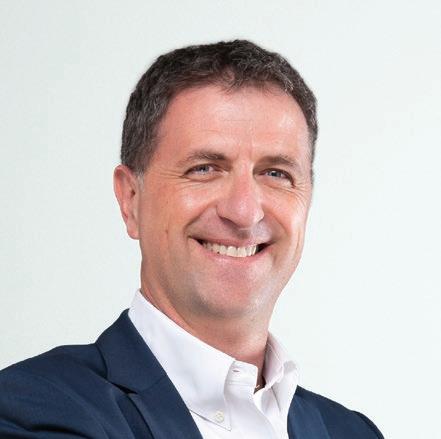
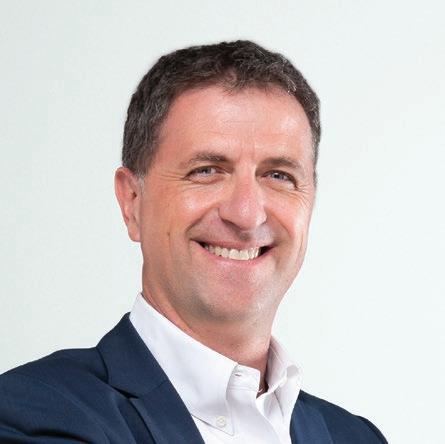
“For overall skeletal health, bone density is important, of course. But bone quality is just as important.”
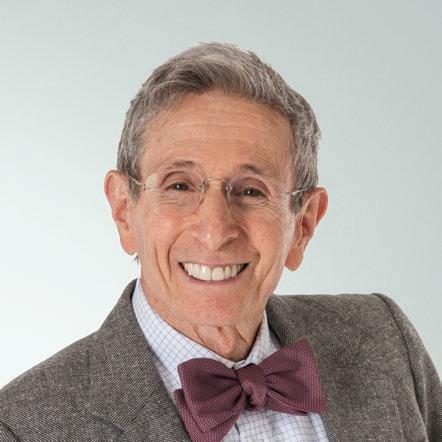
“Healthy bones require proper nutrition and consistent activity that stresses them.”
